
Health4mom.org Save To Your Mobile ✦ POWERED BY THE NURSES OF
FOR SUPPORT DURING YOUR LABOR
YOUR PRENATAL VITAMIN DIAPER BAG ESSENTIALS MAKE A POSTPARTUM RECOVERY PLAN BEST BREASTFEEDING POSITIONS ISSUE 35 / 2023 | $3.95 | health4mom.org PREGNANCY | BIRTH | PARENTING
PLAN
PICK
















22 Diaper Bag Essentials: Behold Your New Purse!
30 “Let’s Let the Good Time Roll”





Freedom of movement makes labor a lot easier so let your wonderful body loosen up and do its thing!
32 Pushing Positions
Brush up on your understanding of two of the most common pushing positions.

34 Support During Labor & Birth
Birth is easier with help and support! Plan who will be with you when contractions start.



36 Essential Oils That Might Be Helpful in Labor!
During pregnancy, essential oils can provide a soothing eff ect and serve as a benefi cial natural remedy for pain relief.
38 Placenta Wisdom, Rituals and Traditions: Know Your Placenta’s Worth!
Explore the many rituals and traditions various cultures ascribe to the placenta and how they honor this vital organ.
41 Strategies for Healthy Eating in Pregnancy
Eff ective tips to maintain a healthy pregnancy diet and nutrition.

43 How To Choose The Right Prenatal Vitamins
What are the perfect prenatal vitamins to support your pregnancy?

44 The Importance of Skin-to-Skin
Engaging in skin-to-skin contact fosters a profound connection with your little one.







46 Top Must-Have Self-Care Items Following Vaginal or Cesarean Birth

There’s no need to stress mom! Take time to unwind as you recover from childbirth.
50 When Baby Needs Intensive Care






Don’t worry, those working in the Neonatal Intensive Care Unit are there to help ensure baby is healthy and growing.
53 Baby’s Best Bedtime Routines



It is always good to establish a bedtime routine that suits both you and your baby.

54 Six Essential Tips for Traveling with Baby
Ensure a joyful travel experience for your little one with these valuable tips.
57 Must-Have Toys for Budding Babes Ages 6-12 Months
We list some of the best and most appropriate toys that never fail to put a smile on your little one’s face.

IMAGES: DREAMSTIME; GETTY IMAGES The Importance of Skin-to-Skin Issue 35 / 2023
Contents
Positions
Best Bedtime Routines Why Women Should Consider the Human Papillomavirus Vaccine Moms’ Stories: Meet Shante White & Family Must-Have Toys for Budding Babes Ages 6-12 Months ◆ healthy moms ◆ healthy pregnancy
healthy babies 11 32 53 44 24 57
Should
the Human Papillomavirus
Learn about the Human Papillomavirus Vaccine and whether it’s right for you. 13 Breastfeeding & Medication Safety
answer the important questions when it comes to taking medications during pregnancy.
Breastfeeding Positions What are the best and most eff ective breastfeeding positions? 19 Plan Ahead for Postpartum Recovery Give yourself time to fully recover from the incredible experience of pregnancy
Pushing
Baby’s
◆
11 Why Women
Consider
Vaccine
We
15 Top 5
and childbirth.
Don’t know what to bring with you when out and about with your little one? We have your to-go list. 24 Moms’ Stories: Meet Shante White & Family
who
birth has a story to tell. Meet Shante White and learn about her journey.
mom, it is important
baby enters a clean and uncluttered household.
Every woman
gives
27 It’s Spring-Cleaning Time! As an expectant
your
3




LASHEA HAYNES, MED, MSN, APRN, AGCNS-BC, RNC,C-EFM
Editor
Perinatal Potpourri, LLC Nurse Mentoring & Consulting
Atlanta, Georgia
JAMIE VINCENT, MSN, APRN-CNS, RNCOB, C-EFM, C-ONQS
John Muir Health
Walnut Creek, California
NIKITA JOHNSON, CPM-S, CBE, COBST, CNA, CD
Certified Doula & Professional Nurse
Midwife Student
Baltimore, Md
ALIAH THOMAS, RNC-OB
Wellstar Health System
Atlanta, Georgia
ESSENCE WILLIAMS, MSN, BSN, RNCMNN, CCB, LCCE
Southern New Jersey Perinatal Cooperative (SNJPC)
Crum Lynne, Pennsylvania
KIMBER STOVESAND, RN
Nomad Health
Charlotte, North Carolina
LAKISA BALLARD, MSN, RN, C-EFM, RNCOB
Holy Cross Hospital
Silver Spring, MD
SHAWANA S. MOORE, DNP, MSN, CRNP, WHNP-BC
Emory University
Atlanta, GA
RACHEL NAPOLI, DNP, PHN, CNS, RNCOB, IBCLC
Sonoma State University
Petaluma, CA
JESSICA MCNEIL, DNP, APRN, CNM, RNCOB, C-EFM
Parkland Health & Hospital System
Baylor University, School of Nursing
Dallas, TX
HEATHER WATSON, PHD, MSN, RN Johns Hopkins Health System
Baltimore, MD
DANIELLE BEASLEY, PHD, RN, RNC-OB, CNE
University of South Florida
Tampa, FL
JENNIFER PETERMAN, BSN, RN, IBCLC Hospital of the University of Pennsylvania
Philadelphia, Pennsylvania
SHABRITTANEY L. CONDOL, BSN, RNCOB
Baton Rouge General Medical Center
Baton Rouge, Louisiana
NATALIE SHELTON, MSN, APRN, ACNS-C, FNP-C
Clinical Nurse Specialist & Nurse Practitioner
Atlanta, Georgia
You’re Not “Pushy;” You Are Your Best Advocate
By Shakira Henderson, PhD, DNP, MS, MPH, RNC-NIC, IBCLC
Have you ever been in a healthcare visit where you felt like you weren’t being heard or believed? Did it embolden you to push harder to be heard? Or were you shy about speaking up because you didn’t want to off end or anger the doctor or nurse helping you?
From your pregnancy provider visits to being admitted to the hospital for baby’s birth, you’ll have many choices to make—and the right to make the best choice for you and your family, no matter what and who comprises “family” for you.

Push for Best Outcomes
Create a best-case scenario for your pregnancy, labor, and birth with these tips from nurses when preparing for labor and birth:
Choose a pregnancy provider who makes you feel comfortable discussing your pregnancy, labor, birth, and postpartum recovery
Know your rights: This is your pregnancy, labor, and birth—you
have the right to make the decisions about your care, and the right to change your mind
Learn about birth and the best ways to birth; ask about childbirth education classes
Prepare for birth: Bring your questions to each prenatal checkup; ask for a follow-up phone appointment if you run out of time for questions at any visit
Share your thoughts and goals for birth with your provider, including your fears and anxieties, especially if this is your fi rst pregnancy
Speak Up for Best Care
It’s okay to share your concerns with your care team. Whether it’s changing positions in labor, understanding how labor is progressing or denying any tests or procedures without discussing the risks and benefi ts for an informed decision with your pregnancy provider. As nurses, we understand: You’re not being pushy, you’re advocating for the best care for you and your baby.
◆ IMAGES: DREAMSTIME
HEALTHY MOM&BABY EDITORIAL ADVISORY BOARD
SHAKIRA HENDERSON, PHD, DNP, MS, MPH, RNC-NIC, IBCLC , is the 2023 President of the Association of Women’s Health, Obstetric & Neonatal Nurses (AWHONN), the professional organization of nurses who provide care for women, pregnant persons, and newborn babies.
Join us on Facebook facebook.com/HealthyMomAndBaby ISSUE 35 / 2023 Healthy Mom&Baby 5
AWHONN’s mission is to improve and promote the health of women and babies. Healthy Mom&Baby is powered by the nurses of AWHONN.

AWHONN
AWHONN 2023 President
Shakira Henderson, PhD, DNP, MS, MPH, RNC-NIC, IBCLC
Editor in Chief
LaShea Haynes MEd, MSN, APRN, AGCNS-BC, RNC,C-EFM
Chief Executive Offi cer
Jonathan Webb, MPH, MBA
Senior Vice President, Strategic Partnerships, Communications & Meetings
Billie Robinson, MBA, CAE



Senior Director, Strategic Partnerships & Publications
Carolyn Davis Cockey, MLS, LCCE
Associate Director of Publications
Brea Onokpise, MPH, LCCE, MCHES
MAITLAND WARNE
Group CEO & Publisher
Kevin Harrington
Sub Editor
Emmanuel Berhanu
Design
Joanna Harrington
Friyan Mehta
Production
Ray Walsh
Cover image

© Getty Images/iStockphoto
Healthy Mom&Baby is published by Maitland Warne in partnership with AWHONN.
© AWHONN, 2023. All rights reserved. All material in Healthy Mom&Baby is wholly copyright. Reproduction without the written permission of AWHONN is strictly forbidden. Neither this magazine nor its contents constitute an explicit or implied endorsement by AWHONN or by Maitland Warne of the products or services mentioned in advertising or editorial content. The editorial content in this publication does not necessarily represent policies or recommendations by AWHONN. This publication is not intended to be exhaustive. While every eff ort has been made to ensure accuracy, neither AWHONN nor Maitland Warne shall have any liability for any errors or omissions. Readers who may have questions should consult their healthcare provider.
PUBLISHER
MAITLAND WARNE
29 East Madison Street, Suite 809, Chicago, IL 60602, USA
Tel: (312) 572 7729

www.maitlandwarne.com
EDITORIAL INQUIRIES
AWHONN
Health4Mom@awhonn.org
www.AWHONN.org
Let’s Talk About It; Let’s Learn & Grow Together!
By LaShea Haynes MEd, MSN, APRN, AGCNS-BC, RNC, C-EFM
Well, hello again, another year has rolled by, and I have really been enjoying our time together learning, sharing and advising you and your precious families. You know childbearing is an amazing privilege bestowed upon us. And I am so happy to be able to spend time with you as your body goes through this amazing miracle from conception to your baby’s entrance into this world.
This edition will not disappoint; it will provide you with the same level of knowledge, tips, survival guides, and information you have counted on! Remember for more articles, or further content on your favorite topics go to Health4mom.org for more information. Also please follow us on our Facebook and Instagram pages for news, updates, and live discussions on topics across the spectrum of trying to conceive, conception, and through your baby’s first few years of life. So, tune in; you don’t want to miss out!
As always, I want to extend a thank you for supporting our magazine and sending a special hello from the many amazing nurses who volunteer their time and expertise to our Healthy Mom&Baby Editorial Advisory Board. They really enjoy writing these articles that are sure to keep you engaged, supported, and informed during your pregnancy, journey into motherhood and during the first few years of parenting where they have lots of advice for you regarding immunizations and nutrition for babies into their toddler years. Take comfort in knowing our articles are evidence-based and written by the educated, professional, and passionate nurses of AWHONN.
Finally, we have a new feature, we are sharing the stories of families who have recently been through the child birthing experience, and they want to share their personal stories with you. We can’t wait for you to meet Shante White and learn her family’s story. We hope you will enjoy reading their journey.


Yours Truly,
LaShea Haynes, MEd, MSN, APRN, AGCNS-BC, RNC, C-EFM Editor in Chief, Healthy Mom&Baby
◆
LaShea
ISSUE 35 / 2023 Healthy Mom&Baby 7
“

No one told me I would lose control of my bladder”


Giving birth is traumatic to your pelvic floor. How quickly will you recover?
1 in 3 moms develop bladder leaks, and pelvic floor trauma

The good news is that ELITONE ELITONE restores your pelvic floor by contracting and toning your pelvic floor muscles. Wear ELITONE under your clothes while you do other things... like taking care of your baby.




FDA-cleared ELITONE is completely external. You can use ELITONE as early as 6 weeks* after delivery, sooner than with vaginally inserted devices. Visit convenient, and comfortable your pelvic floor recovery can be.






Consult your physician if using earlier than 6-weeks postpartum. + Available for a limited time
$40 with
FORMOM
elitone.com
*
Save
code
at
+
Regain Control. Regain Confidence®
Mediterranean and MIND Diets Protect Your Brain

A diet filled with veggies, fruits, whole grains, olive oil, beans, nuts, and fish is brain protective and may reduce the type of plaques and tangles in your brain that can lead to Alzheimer’s disease, say researchers who published their work in the journal, Neurology ®, the medical journal of the American Academy of Neurology.
The MIND and Mediterranean diets both emphasize vegetables, fruits and three or more servings of fish per week, along with rich green leafy vegetables including kale, spinach, and collard greens. Add in berries and a small glass of wine, and you’ve got a brain protective diet, says study author Puja Agarwal, PhD, of RUSH University in Chicago.
“Improvement in people’s diets in just one area—such as eating more than six servings of green leafy vegetables per week, or not eating fried foods—was similar to being about four years younger,” said Agarwal. “While our research doesn’t prove that a healthy diet resulted in fewer brain deposits of amyloid plaques, we know there is a relationship and following the MIND and Mediterranean diets may be one way that people can improve their brain health and protect cognition as they age.”
The study involved 581 people with an average age of 84 at the time of diet assessment who agreed to donate their brains at death to advance research on dementia. Participants completed annual questionnaires asking how much they ate of food items in various categories.
When looking at foods in their diets on type at a time, researchers found that people who ate the highest amounts of green leafy vegetables, or seven or more servings per week, had plaque deposits in their brains corresponding to being almost 19 years younger than people who ate the fewest, with one or fewer servings per week.
“Our finding that eating more green leafy vegetables is in itself associated with fewer signs of Alzheimer’s disease in the brain is intriguing enough for people to consider adding more of these vegetables to their diet,” said Agarwal. The study was funded by the National Institutes of Health.
IMAGES: DREAMSTIME
ISSUE 35 / 2023 Healthy Mom&Baby 9 healthy moms Join us on Facebook facebook.com/HealthyMomAndBaby ◆
Your baby needs at least a full 40 weeks of pregnancy to grow and develop. Inducing labor even a week or two early is associated with a host of risks, including prematurity, cesarean surgery, hemorrhage and infection.
While it may seem convenient for you or your health care provider, labor should only be induced for medical reasons.
Your baby will let you know when she’s ready to come out, so give her all the time she needs: at least the full 40 weeks.
Download

Nobody likes to be rushed, especially babies.
a free copy of 40 Reasons to Go the Full 40 at www.gothefull40.com. The nurses of AWHONN remind you not to rush your baby—give her at least a full 40 weeks! AWHONN PROMOTING THE HEALTH OF WOMEN AND NEWBORNS
Why Women Should Consider the Human Papillomavirus Vaccine
Human papillomavirus (HPV) is the most common sexually transmitted infection. This virus has many types, with some causing minor health problems such as genital warts, and more serious issues including cervical cancer.
HPV can be spread by an infected person through vaginal, anal, or oral sex. It can also be spread through skin-to-skin contact during intercourse. You may be infected with HPV and not experience or see any immediate signs or symptoms. In fact, did you know that symptoms may develop years after having sex with an infected person.
Some HPV infections will clear on their own within two years without causing health problems. However, in some cases, it doesn’t go away and instead causes genital warts and even some cancers.
Genital warts typically appear as a small bump or group of bumps in the genital area that may vary in size and be raised or flat. Your healthcare provider can identify them via an exam.
Protect yourself
HPV Vaccination
The HPV vaccination, a safe and effective vaccine, recommended for the following:
h Girls and boys ages 11 or 12 (or starting at age 9)
h Individuals through age 26, if not already vaccinated
The adult population ages 27-45 is a new group that can now receive the HPV vaccine if not previously vaccinated. If you’re in this age range, ask your healthcare provider about HPV vaccination. Ask about your individual risk factors for contracting HPV infections and the potential benefits of the HPV vaccine. Note: The HPV vaccine will not protect a person against HPV types a person has already been exposed to in their past.
The HPV vaccine is given in a three-dose scheduling series (0, 1-2, 6 months). There are little to no severe side effects following the administration of the HPV vaccination. The most common side effect is soreness at the site of injection.
 By Shawana S. Moore, DNP, MSN, CRNP, WHNP-BC and Patricia J. Kelly, PhD, MPH, APRN
By Shawana S. Moore, DNP, MSN, CRNP, WHNP-BC and Patricia J. Kelly, PhD, MPH, APRN
Pregnancy and Lactation
The HPV vaccine is not given during pregnancy. However, if a pregnant person receives the vaccine during pregnancy, it has not been shown to cause harm to the developing fetus. The HPV vaccine can be safely administered to people who are lactating. Please talk to your healthcare provider to determine if the HPV vaccine would benefit you. There are lots of resources to support you in engaging in this discussion with your healthcare provider.
SHAWANA S. MOORE, DNP, MSN, CRNP, WHNP-BC is a women’s health nurse practitioner. She serves as an Associate Professor and the DNP Program Director at Emory University’s Nell Hodgson School of Nursing. She is passionate about equitable, respectful, and inclusive maternal-child care.
PATRICIA J. KELLY, PHD, MPH, APRN is a professor of Nursing at Thomas Jefferson University and has been a family health nurse practitioner for 30 years. She has worked with women to maximize their health in a variety of community-based settings.
IMAGES: DREAMSTIME
ISSUE 35 / 2023 Healthy Mom&Baby 11 healthy moms
against HPV: Get vaccinated, have regular screening for cervical cancer, use condoms when you’re sexually active, and practice monogamous relationships.
From Our Family Farm To Your Family Table
Almond Lane is a family owned almond farm with agricultural roots dating back to the early 1900’s. We are located in Woodland, CA, home to the best soil and climate conditions for growing almonds in the world. We have a passion for the process of producing fresh tasting, natural almonds. We practice sustainable growing practices and are one of very few farm-to-consumer direct almond brands. Our SCS and OBA certifications demonstrate our commitment to meet the highest levels of environmental, social and economic sustainability to keep our environment and wildlife thriving. This allows us to deliver the best value and taste to our customers. From our family farm to your family table, Almond Lane delivers!
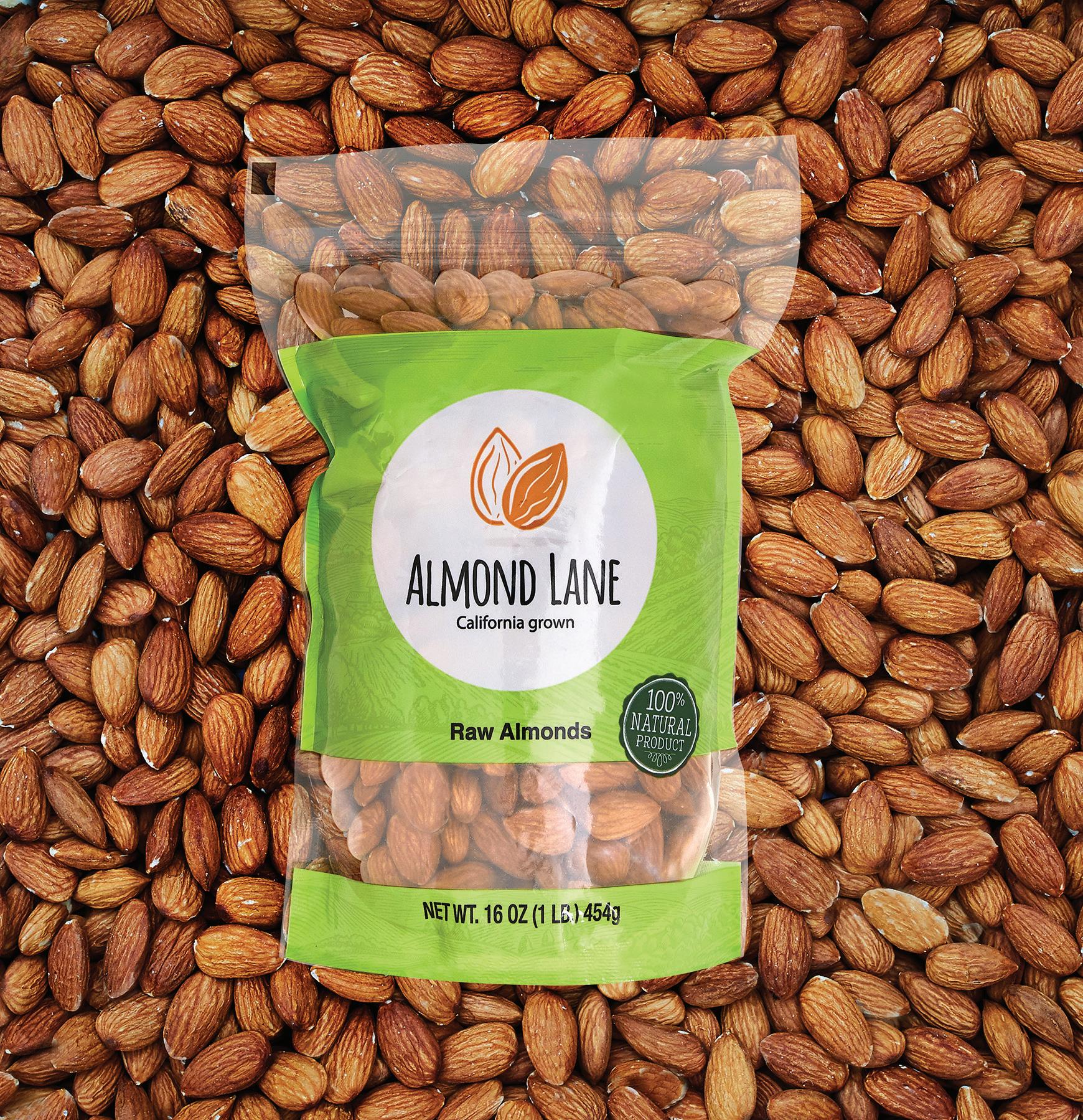
www.almondlane.us Follow


us @Health4Mom
Breastfeeding & Medication Safety
By Paris Maloof-Bury, CNM, RNC-OB, IBCLC
I’m sorry you’re sick, mommy,” said no baby ever. So what happens when a nursing parent needs an antibiotic, some cough syrup, or something to fend off that fever? And what about medications that need to be taken daily, like antidepressants or allergy meds?
If there’s one thing parents are good at, it’s putting their kiddos first. The good news is that in most cases, you don’t have to choose between what’s best for your own health and nursing your baby. You just need the right information and some good support.
Did You Take the Medication in Pregnancy?
A good rule of thumb is that if you took the medication in question while you were pregnant, you can probably continue taking it when nursing. During pregnancy, medications you take go directly into baby’s bloodstream via the placenta. Postbirth, during nursing, baby gets any medications you’re taking in your milk. This means baby digests those medications, so they’re typically absorbed at a far lower concentration. The only exception to this rule is when the medication might impact your milk supply, which brings us to the next question…
Will Medications Affect My Milk Supply?
Some medications, such as antihistamines (Benadryl, Zyrtec, etc.) and decongestants (Sudafed, Claritin D, etc.) can reduce your milk supply. Birth control with estrogen, and fertility medications like Clomid can also decrease your milk supply.
What Medications Are Usually Fine?
According to the American Academy of Pediatrics, most medications and immunizations are safe during lactation. Not only are most vaccines considered safe (including COVID-19) but getting vaccinated allows you to pass antibodies to your baby while nursing.
Most medications used to treat postpartum depression and anxiety, asthma, high blood pressure, diabetes, thyroid dysfunction, and infection (including most antibiotics) are usually fine for nursing parents. General and local anesthesia are also safe. Progestinonly birth control methods are OK as long as they’re started after the first four weeks postpartum. Pain and fever reducers like acetaminophen (Tylenol) and ibuprofen (Advil or Motrin) are safe, as are cough medicines like guaifenesin (Robitussin) and dextromethorphan (Robitussin DM). If you’re not sure, look it up online at MommyMeds for Mothers, LactMed, or Infant Risk Center, or run it by your baby’s pediatric provider first.
Should I Pump and Dump to Be Safe?
If you’re not sure if it’s safe to continue nursing while taking that medication, it might seem like a simple answer to switch to bottle feeding (either formula or previously stored milk), and pump so your milk doesn’t dry up. But before you pull out that pump, consider the risks, benefits, and alternatives of that decision.
This decision may affect your baby’s latch and your nursing relationship. In addition, some people find that their bodies don’t respond as easily to the
pump as they do to their baby, and this breastfeeding interruption can reduce milk production.
Formula Feeding
Some switch to formula “just to be safe” when they don’t know where to find the answers they need about a specific medication. Formula fed babies are more prone to infections in the first year of life because baby isn’t getting the protective antibodies in mom’s breastmilk. Those infections include ear, respiratory, and gastrointestinal infections in babies who are supplemented with formula during their first six months.
Is This Medication Risky?
The risk of a particular medication will vary including how easily the medication passes from your bloodstream into your breastmilk, how well it’s absorbed in baby’s digestive tract, and baby’s age (and how mature their liver is).
What Medications Are Too Risky During Nursing?

Certain life-saving therapies, such as chemotherapy and radiation therapy are absolutely prohibited in breastfeeding/ chestfeeding. While human milk is excellent for babies’ health, it’s even more important for mom to be alive!
Certain illicit and recreational drugs are also considered unsafe, if you’re in a supervised methadone treatment program you’ll be encouraged to continue nursing. Smallpox and yellow fever are the only two vaccines not considered safe during nursing.
IMAGES: DREAMSTIME
ISSUE 35 / 2023 Healthy Mom&Baby 13 healthy moms
PARIS MALOOF-BURY, CNM, RNC-OB, IBCLC is a certified nurse-midwife and lactation consultant at Sutter Health in Davis, CA.
One Size Breast Pump Will Not Fit All












“Pumping while being able to move around and get ready for work in the mornings is such a time saver with my wearable Freemie!” — Barbara B.
Pumping breast milk for your baby shouldn’t be hard. There are more choices than ever before, and you don’t have to confine yourself to a bathroom like in the nineties. Right?




The reality is that breastfeeding and pumping can be challenging to learn, and there are things no one tells you. For example, are you in the majority of women whose breasts do not fit well into the “one size fits all” flanges o ered by most breast pump brands?
As the first commercially successful wearable breast pump in the world, we at Freemie have learned a thing or two as we’ve introduced the tools and ideas that have been an important part of the global transformation of motherhood over the last decade. The most important thing we learned is that every woman faces di erent challenges and has di erent needs.
New moms who will pump need to know about their options and resources while also being aware that one size pump won’t necessarily fit every mom. When first getting started selecting a breast pump, new moms will want to consider some basic questions:





Where will you need to pump? Will you need to pump around other people? Will you have the necessary time and privacy to pump?
Will you need to be hands free and able to move around while you’re pumping?

If the convenience of pumping while clothed is essential, then a wearable pump like Freemie may be the way to go. Once you decide on the type of pump you’ll need, try not to blow your budget all at once. Your needs can change over time. You may have to add accessories, switch to a di erent pump style, or change sizes to make your pump routine more comfortable or practical.
If you are prepared to pump whenever and wherever it is necessary, you are more likely to be successful. Being prepared for the unexpected can include simple things like keeping your Freemie Pump fully charged or having extra clean parts on hand.

“Freemie has been a life saver for me. Especially at work. It saves me from being stuck to a wall for numerous hours a day and I can work and walk around freely” — Koree C.


Part of being prepared is also knowing where to turn when you’re having trouble or feeling stressed about feeding your baby. Be sure to get to know what lactation resources are available to you either through your health insurance or through other public or private organizations. Experienced professionals can literally save your lactation journey when you run into obstacles.
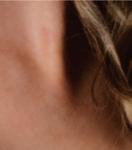
Every woman’s body is di erent, and one size does not fit all. If pumping is painful, it shouldn’t be, and you should consult your healthcare professional. Often the problem is simply the wrong flange size. Freemie has more silicone insert sizes available than any other company so you can adjust the breast flange diameter and dial in an optimal fit. Freemie Fitmie inserts work with our in-bra Collection Cups that hold 5, 6 or 8 ounces of milk per cup, with styles that range from concealable to ultra-discreet. Our versatile cups work with hospital-grade Freemie pumps, and other compatible Pumps



Freemie for more style, comfort and fit for all!


www.freemie.com Advertisement Feature
Top 5
Breastfeeding is a time to relax, enjoy, and get to know your baby. The right breastfeeding position will help your baby latch easily and correctly for nursing, reduce any nipple pain, and help you produce more milk.
Here are a few tips to help you start and sustain nursing, bond with your baby, and enjoy this special time of breastfeeding together:
h Support your back and arms with pillows and other soft props so that you’re comfortable and relaxed
h Support your breasts with your hands, if possible, both above and below the nipple
h Support baby’s body fully; their arms and legs should be flexed and relaxed
h Align baby with your body: Baby’s head, shoulders, body, and hips should be aligned facing your body
h Hold and maintain baby’s head higher than their body
h Make sure you can always see baby’s nose, mouth, and face while nursing
h Nurse skin-to-skin with your bodies touching as close as possible
h If you become drowsy or sleepy while nursing, or can’t stay awake to hold baby upright while they snooze after nursing, always place them on their back in a safe, firm crib or bassinet—never on a soft surface like a pillow or a sofa or chair
Sounds easy, right? It all begins with finding the right and best breastfeeding position for you and baby in each circumstance. These nurse-recommended, mom-tested, and baby-approved positions are our top 5:
Breastfeeding Positions
Cradle Hold (aka Madonna)
Why we love it:
It’s one of the most popular positions and is best used when baby’s at least a few weeks old, has better head control, and has more experience latching on to the breast.
How to do it:
h Sit upright, with good back & arm support
h Add a pillow under baby to position them right at your breast
h Put one leg on a footstool to help baby’s body face you and to reduce muscle strain
h Lay baby across your lap, cradling their head in the crook of your arm, with your forearm underneath baby for support
h Baby’s head, body, and hips face you
h Guide baby to latch with your other arm
By Charlotte Wool, PhD, RN
Cross-Cradle Hold (Crossover)
Why we love it:
Try this position from birth on, and especially while you can still use both hands to hold baby’s head and support your breast.
How to do it:
h Begin similarly to the Cradle Hold, only use your arm opposite your breast to hold baby so your left arm supports baby at your right breast, and vice versa
h If baby is nursing at your left breast, your right arm holds and supports baby against your body while also guiding their head to your nipple
IMAGES: DREAMSTIME
ISSUE 35 / 2023 Healthy Mom&Baby 15 healthy moms
Football Hold (Clutch)
Why we love it:
Moms with cesarean incisions like this position because there’s no strain on your abdomen as you tuck your baby under your arm, on your nursing side, like a football or your favorite purse (remember those!). You can also use both hands to hold and adjust baby’s head while supporting your breast and guiding baby’s latch.
How to do it:
h Sit upright, with good back & arm support
h Place your baby under your arm, face up and toward your side, as if you were carrying a football
h Use your arm on the side from which baby is nursing to support their back and use your hand to support their neck
h Use your other arm to support your breast and help baby latch
h Use pillows or blankets to support baby’s body at the right height for comfortable breastfeeding
Laid-Back Breastfeeding
Why we love it:
This newer, researched position is gaining popularity. It uses your body to support baby naturally in a comfortable position for both you and baby, which is why some experts call this biological nursing.
How to do it:
h Semi-recline on a sofa or bed, with pillows propped around your body for comfort and support
h Lay baby on your body so that their mouth is at your breast
h Baby should lay so that the natural curves of your body support their weight and position
h You should always be able to see baby’s face and nose while they’re feeding
h Your arms are free to cuddle and relax as baby is naturally positioned at your breast for feeding
Side-Lying Position
Why we love it: This is your go-to position when you’re exhausted, medicated or uncomfortable, such as after cesarean or an episiotomy. Ask your nurse or partner to help you position baby so that you can always see their face and nose while nursing. If you start to feel sleepy, hand baby off to an alert adult or place baby into their crib or bassinet, always on their back only, before you drift off to sleep.
How to do it:
h Lay on your side, placing baby next to you, facing you, with their mouth opposite your breast
h Prop your own head, neck, and shoulder comfortably so that you’re supported during the feeding
h Use your lower arm to snuggle baby close to you, pressing them toward you from their back
h Use your upper arm to support your breast and help baby latch
IMAGES: DREAMSTIME
Charlotte Wool, PhD, RN , is a nurse educator and expert advisor to Healthy Mom&Baby
16 health4mom.org healthy moms
Promoting Healthy Milk Supply From The Start




Having that unfulfilled sensation when pumping? Baby fussing unhappily during feedings? Here’s a comforting thought: Moms are created to naturally feed their offspring and keep them satisfied.


Mom’s diet plays a huge role in milk supply. Certain herbs (mint, sage) weaken supply. Other foods are known to boost supply (avocado, brown rice).
With all that, who’s not looking for a quick snack to boost energy and supply… Mommy’s Cookie Jar cookies don’t merely taste great but contain the finest quality of key ingredients known to augment Mom’s milk supply. These include brewer’s yeast, flaxseed and oats. The New Mom Starter Kit comes with a variety of flavors, such as White Chip Cranberry and Mocha Chip, in convenient packs of two to grab and go.

www.mommyscookiejar.com
@MommysCookiejar

Your breast milk, transformed. Learn more at www.milkify.me or call us at 832-534-0465 We make it easy to store, use, and transport your breast milk by turning it into a shelf stable powder that extends expiration date by 3 years. We send you everything you need to ship your milk to us. We then turn each bag of frozen milk into its own pouch of powder. To make a bottle, just add water! Freeze-drying is the best way to preserve the nutrition of breast milk for the long-term. Great for travel, relocations, caretakers, or simply to take back your freezer. Email your feedback to: health4mom@awhonn.org Let us know your thoughts and comments on the Healthy Mom&Baby magazine and website. What do you like? What do you dislike? What subjects would you like to read more about?

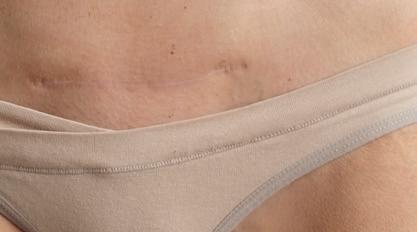




















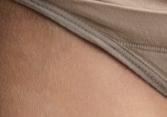











































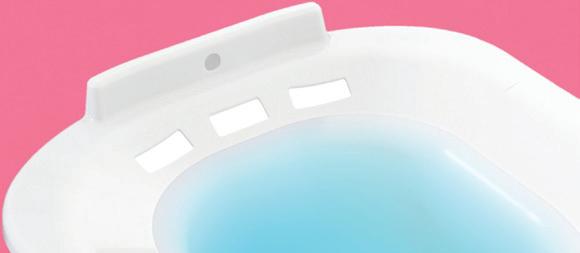








a sitz bath post-birth is a great way to heal your perineum and keep your nether regions clean and free from infection. Whether you experienced hemorrhoids after birth or need help calming inflammation and swelling, our sitz bath is a postpartum must-have. Soothing postpartim One sitz bath at a time AVAILABLE AT: soothic.com and amazon.com Scan to view on amazon.com
Using
Plan Ahead for Postpartum Recovery









 By Paris Maloof-Bury, MSN, CNM, RNC-OB, IBCLC
By Paris Maloof-Bury, MSN, CNM, RNC-OB, IBCLC
Twenty-fi ve years after the birth of my fi rst child, I can still remember how awful I felt. Sure I was excited about this beautiful baby that had miraculously and painfully emerged from my body. But I wasn’t prepared for the icky feelings from my body that followed. And I’m a nurse and midwife!
Women typically aren’t prepared for recovery from childbirth, according to research published in Obstetrics & Gynecology. Some women told researchers this lack of preparation
left them feeling less satisfi ed with their healthcare providers and compelled some to skip their postpartum check-ups.


Fewer women are taking childbirth courses, and recovery from pregnancy, labor, and birth can almost seem like a marathon! Experts estimate that as many as 40% of mothers are skipping postpartum care, which can put moms at risk especially if they’re dealing with chronic health conditions such as diabetes or high blood pressure.
Recover from Birthing
Whether baby is born via vaginal or cesarean birth, prepare for your body’s recovery by having these supplies on hand in the hospital and at home:



Common pain relievers













Postpartum wrap or a pillow for counter-pressure against a cesarean incision





Heating pad or wrap to ease fullness in your breasts and help with soreness



















Period pads from heavy to light until your bleeding ends






Hot and cold packs at your preference to relieve painful and sore areas
Lanolin for nipple chapping, cracks or soreness with breastfeeding


Witch hazel for vaginal pain or hemorrhoids
Stool softener helps get you moving again post-birth
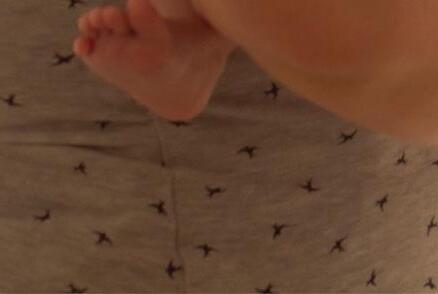

Sitz bath for soothing pain
Squirt bottle to rinse your lady parts after urinating to aid healing
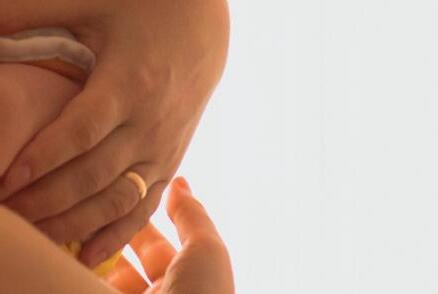
IMAGES: DREAMSTIME
ISSUE 35 / 2023 Healthy Mom&Baby 19 healthy moms
Your First Postpartum Visit: 3 Weeks Post-Birth
ACOG now recommends that postpartum care should be an ongoing process, rather than a single visit at 6 weeks postpartum, and that all women have a follow up appointment with their pregnancy care providers within the first three weeks postpartum. Contraception to avoid a subsequent, too-soon pregnancy after birth is typically upmost of mind for most pregnancy care providers but not all moms and managing health complications post-birth is important for mom’s health.
If you birthed vaginally, expect to spend 1-2 days at the hospital postbirth, and if all goes well, resume regular activities within just a few weeks. If baby was born via cesarean, you’ll spend up to 3-4 days in the hospital and it will take up to 6 weeks for you to recover from this major abdominal surgery. Still, no two moms recover the same way, and no one knows your own body better than you—so listen to those twinges, pains and sore areas—and be gentle and nurturing with yourself after birthing.
Envision Your Recovery
Labor is short, relatively speaking, and followed by a much longer recovery period. Healthcare providers focus so much on prenatal care and often skip over what happens following childbirth. But you can change this, and we’ve got just the list of questions for you to bring to your next prenatal appointment.
In the rush to get out of hospital, you may forget or simply fail to ask these questions – and then wonder if what you’re experiencing at home is “normal.” Take notes now to prevent anxiety once you’re tucked away safely at home with that new wiggly bundle that is your baby.
Questions Women Ask About Postpartum Recovery

X How much will I bleed after delivery? What’s normal? How much bleeding is too much and who do I call if that happens?
X What should I expect my perineum (“down there”) to feel like after birth?
X If I have an episiotomy or tear, what will that feel like as it’s healing, and how do I help promote healing?
X What are “after pains” and how long may they last?
X How soon should my abdomen return to its pre-pregnancy shape and size? What will it feel like immediately after birth?
X What changes can I expect in my breasts if I’m breastfeeding? If I decide not to breastfeed, how do I care for my breasts, and how will they feel?
X How do I prevent engorgement in my breasts when breastfeeding?
X Will I be able to use the bathroom as normal? When will elimination be normal again? What problems should I look for?
X What’s the best way to lose the pregnancy weight?
X How soon can I start exercising again? Are any exercises off limits following birth?
X What about sex after birth? How soon can I resume intercourse, and is there anything special I need to know about or plan for?
X Is there anything I should avoid doing for any period of time following baby’s birth, and if so, why?
IMAGES: DREAMSTIME
20 health4mom.org healthy moms
PARIS MALOOF-BURY, MSN, CNM, RNCOB, IBCLC is a certified nurse-midwife and lactation consultant at Sutter Health in Davis, CA.












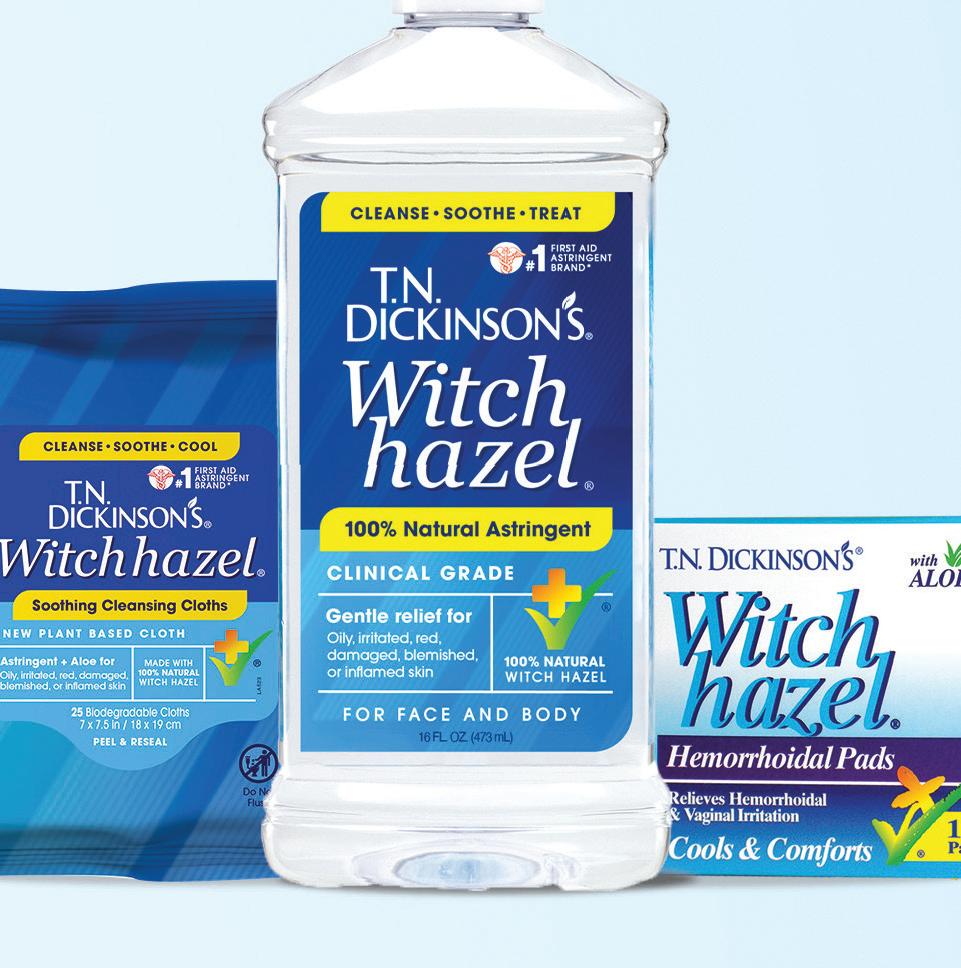
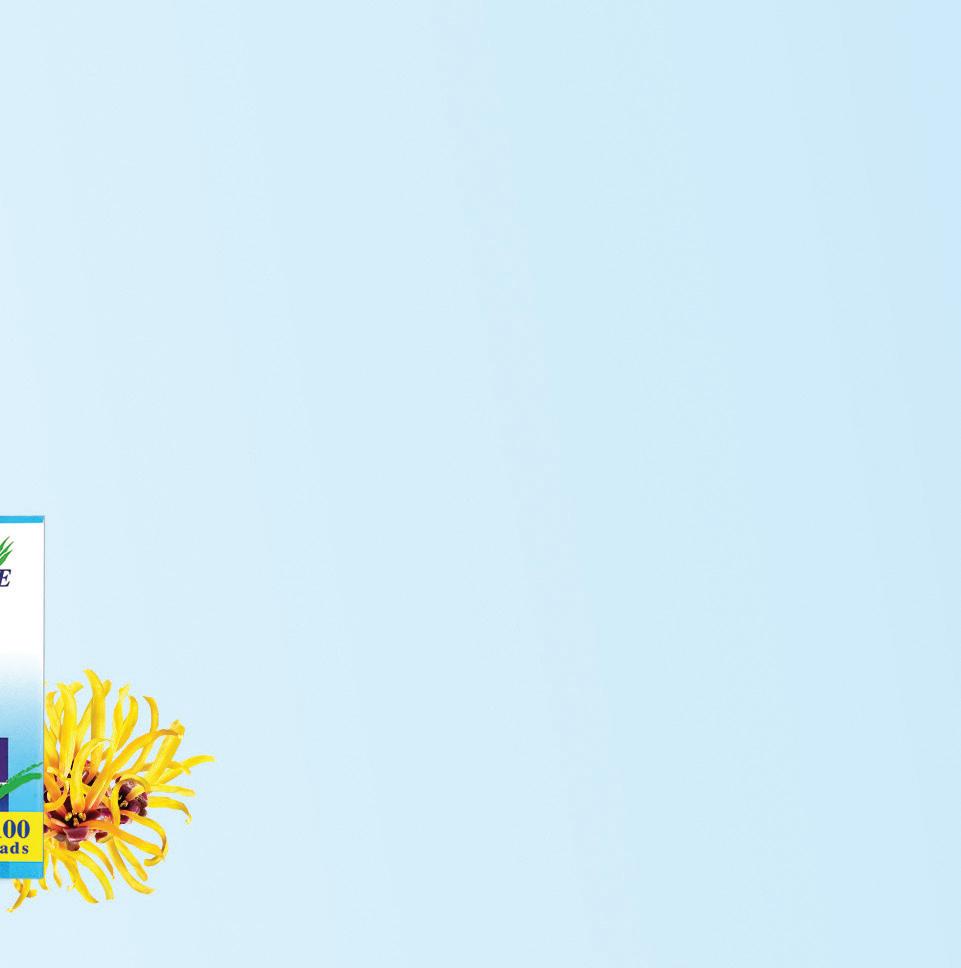


































Diaper Bag Essentials: Behold Your New Purse!
This handy tote is all you’ll need to care for baby at home, and while out and about
By Carolyn Davis Cockey, MLS, LCCE
Hello baby; goodbye purse! If you’re like a lot of moms, you have a wide variety of ways to carry your wallet, car keys, and other essentials. They say, “a baby changes everything,” and your purse may be one of the first personal items to go unless, of course, it fits in your diaper bag!
Here’s some real-world advice: You need your own diaper bag that you keep stocked when out and about with baby, and so does anyone else who regularly totes baby around. This means baby’s care providers— your partner, daycare provider, and so forth—each need their own supplies and diaper bag. It may sound extravagant but it’s one of our readers’ favorite pieces of advice online.
What to Pack in the Diaper Bag
Of course, diaper bags hold diapers, wipes, a changing pad, disposable bags to contain dirty diapers, rash cream, and at least one or two changes of clothes. But they can hold so much more, including your baby’s immunization card, which helps you bring it to each pediatrician visit.

As you’re creating your baby registry, choose a couple of different bags, from over-the-shoulder slings to backpackstyle bags—an abundance of cubbies and compartments is essential—these will keep you organized.
Take an inventory of what you will need in all the places you may change baby—out shopping, at a park or beach, in a public bathroom, or at a friend’s house, for example. Start with the basics and build up: You’ll need a portable changing pad to protect
the surface you’re changing baby on and protect baby from germs or other contaminants. Add in a change or two of clothes, diapers, wipes, rash cream, disposable bags to get rid of dirty diapers, and a way to wash or sanitize both your and baby’s hands.
You’ll find it’s also helpful to bring bottles of your milk or formula with freezer packs, or finger foods, as snacks depending on your little one’s age. If you’re going outside, a jacket, hat, and sunscreen could be necessary. Add in a few extra toys, books, and pacifiers and you’re set for a fun time away from home.
A Perfectly Packed Diaper Bag
X Diapers, wipes, diaper rash cream
X Changing pad and disposable bags for trashing soiled diapers
X Wet towelette packs to wipe your hands, and baby’s too, plus hand sanitizer
X Food for baby (and bottles!)
X Pacifiers, toys, and snacks
X Extra swaddles or blankets
X One or two extra outfits
X A jacket and a hat
X Sunscreen
X Your wallet, car keys, and mobile phone
IMAGES: DREAMSTIME
CAROLYN DAVIS COCKEY, MLS, LCCE , is the founding editor of Healthy Mom&Baby, Senior Director of Partnerships & Publications at AWHONN, and a Lamaze-Certified childbirth educator in Sarasota, FL.
22 health4mom.org healthy moms
Stay hydrated and comfortable with






Pregnancy: Frequent urination is common during pregnancy. It’s not healthy for you or the baby to restrict water intake. pStyle allows expectant parents to pee discreetly into a secure container which can be properly disposed of at the next convenient time.

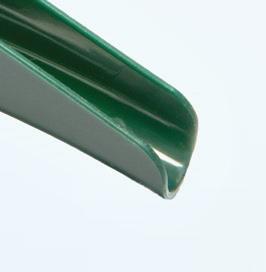
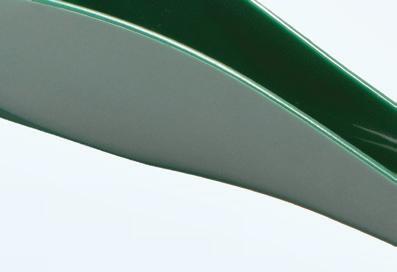

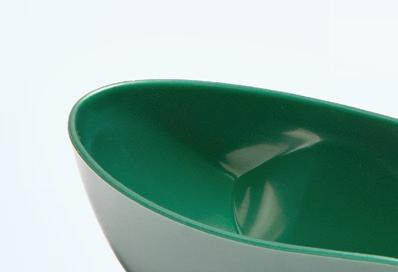
Post partum: When your child is in a sling or carrier you’ll find standing to pee has its advantages. Baby can remain undisturbed while you take care of your own health by peeing when you need to.

Children: Do you dread hearing - Mommy I have to pee - when restrooms are unsanitary? Kids find it easy to use the pStyle. It’s also fun and empowering for them!
For pregnancy and parenting advice at your fingertips, on any digital device from phone to tablet to desktop, the Healthy Mom&Baby digital edition is your searchable, clickable, readable friend!




Read online at: www.health4mom.org/hmb



Ocean
NOW in Recycled
Plastic
Moms’ Stories: Meet Shante Wright & Family

24 health4mom.org healthy moms
It was a Tuesday night when I went to bed like any other night, but I found myself having a difficult time staying asleep due to a headache. I took some Tylenol and laid back down. After a few hours, the headache started again so I took more medicine.
Wednesday morning, I got ready for a drive a few hours away to prepare for my upcoming baby shower in my hometown. I noticed while getting ready to go that I could no longer fit my wedding ring onto my finger. I brushed it off to third trimester swelling. The slight weight gain and swelling seemed minimal considering I hadn’t gained any weight throughout the pregnancy.
Once I arrived at my hometown, I noticed my legs and feet were severely swollen. My best friend joined me so we could head to dinner. Since she was also a fellow labor & delivery nurse, she suggested we check my blood pressure. Using my mom’s cuff, we checked, and it was 190s over 100s. In disbelief I initially assumed the calibration was off, but everyone else’s blood pressure was normal. A bit later I opted to go to triage at the hospital and was shocked at the numbers on the monitor: My blood pressure was 200/116.
I felt scared, shocked, confused, and angry. How did this happen? I was “healthy” just last week! I was in the greatest shape of my life, I ate a balanced diet, and had only low to moderate stress. And to top it off, I am a labor & delivery nurse and a childbirth educator. How could I have not realized what was going on?
They put me on a magnesium drip and the following day started checking my urine every 24 hours to establish a diagnosis: Preeclampsia—dangerously high blood pressure in pregnancy. I was 31 weeks pregnant, so I also received steroid injections to speed my baby daughter’s lung development should she need to be born early to save both of our lives from harm, even death.
When Things Got Even Worse
That’s when my health care team noticed something gravely wrong. It was the middle of the day, and my body hadn’t produced any urine even though I was on a continuous IV fluid drip and drinking fluids.
My lab results came back in the most critical range that my team and I had ever seen. I was now in full blown HELLP syndrome. The worst part? I was asymptomatic. My body was going into multi-organ failure, yet I was showing no signs. Had I not already been admitted to the hospital I would never have known something so sinister was happening inside of my body.
daughter’s birth by cesarean. Laying on the operating room table, it was surreal being on the other side of those drapes. Following surgery, and through the next full week, my healthcare providers tried to find a medication regimen to control my high blood pressure. Unfortunately, it did not return to normal after delivery. I remained on medications for approximately two months, and even now, one year postpartum, my blood pressure ranges have never returned to their original baseline. Left untreated, high blood pressure can lead to severe forms of preeclampsia, and moms and babies risk stroke, seizure, organ failure, and death.
Don’t Rationalize Changes
Surprised by High Blood Pressure
After receiving the maximum dose of several medications my blood pressure finally came down to a less severe range. I was admitted to the hospital, and they discussed keeping me until I was at least 34 weeks pregnant.
Ultrasounds showed my daughter wasn’t growing anymore and in the less than 3% percentile for weight. I was in the hospital alone because I hadn’t planned on staying in my hometown for a longer period after the baby shower. I called my husband and asked him to make the drive because our baby needed to be born by cesarean very soon.
Greeting My Daughter
My husband and mother arrived, and we prepared ourselves for my
Looking back, I would tell others to not take slight changes during pregnancy lightly. Preeclampsia does not discriminate and happens abruptly. See your pregnancy care provider if you have rapid onset weight gain, persistent headaches or visual disturbances, or swelling that affects multiple areas. These are emergent reasons to follow up with your provider.
Take your prescribed medications as ordered and have frequent follow ups throughout your postpartum period (the full 12 months following the birth of your baby). And most of all be kind to yourself. No one deserves, wants, or expects to go through such a life-altering experience but it is not your fault, and you could not have prevented it, just as I couldn’t have prevented what I experienced. I share my story to let others know you are not alone.
HELLP syndrome is a is a lifethreatening pregnancy complication usually considered to be a severe version of preeclampsia
ISSUE 35 / 2023 Healthy Mom&Baby 25 healthy moms








try our lavender natural dryer sheets too follow us! @gobeyondclean @beyondcleanproducts Code: HEALTHYMOM www.beyondcleanproducts.com *limit one per customer Gentle on your baby’s skin. Better for the environment. “It’s the only laundry detergent I’ll use on my baby’s sensitive skin” Take 20% off laundry care for your baby’s sensitive skin! laundry detergent sheets Hypoallergenic No chlorine bleach No added dyes Better for the environment Zero plastic waste Lightweight Space saving 55% USDA Certified Biobased Content Use hot or cold water For all washing machines, including HE Made in North America Follow us HealthyMomAndBaby
It’s SpringCleaning Time!
By Carolyn Davis Cockey, MLS, LCCE
It ’s that burst of energy, or the extra spring in your step brought about by the warmer and longer days of spring that puts you in the mood to reset everything fresh and clean in your home. But where to begin?

Bust Up the Clutter
Most of us are clutterers at heart if we’re being honest with ourselves. Think about the books you planned to read. The super cute outfit you bought with every intention of wearing yet it’s still in the closet with its retail tags. Or check the corners of each room—do you see dusty cobwebs adding to the overall disarray?
If we’re being honest with ourselves, spring cleaning is a pretty big job that might leave you tempted to start first with a cup of something soothing. Gentle reader, push those thoughts aside and embrace the change you want to see!
We’ve got a system that will not only put everything right within your home, but help you keep it that way in the months to come. This is particularly
important if you’re like so many of our readers and fans—currently gestating a little babe!
The Four Box Decluttering System
Grab four cardboard boxes or cute bins—your choice—and label them:
1. Keep—and return item to its proper place
2. Toss or recycle—these items may be past their useful life
3. Rehome with someone else— remember how much your friend liked that particular vase?
4. Donate to charity or thrift—and take the small but satisfying tax deduction
Start by decluttering and reward yourself for the help you’ll be giving others when you donate items with plenty of useful life left at the end of our exercise. Then, summon your inner Marie Kondo, examine each item and ask yourself if it “sparks joy?” Is it still needed or useful (our addition to Marie’s system) as you sort all stray
items into one of the four boxes. Go easy as you progress, like Kondo, who after years of rigid decluttering, says she has eased up on stringent tidying after the birth of her third child earlier this year.
Clean, Polish & Shine
After the pickup and sort is complete, simply start swishing, swiping, and wiping all hard surface areas with your favorite green or essential oil cleaners as you go from room to room, tidying and refreshing. Can you imagine yourself sweeping through your home at least once a month, with your boxes, and setting rooms a little more right each time you do this?
By the time your baby is born, you will have created what we all crave—a true haven that’s ready to welcome the next round of objects that make a house a family home.
IMAGES: DREAMSTIME
CAROLYN DAVIS COCKEY, MLS, LCCE, is the founding editor of Healthy Mom&Baby, Senior Director of Partnerships & Publications at AWHONN, and a Lamaze-Certified childbirth educator in Sarasota, FL.
ISSUE 35 / 2023 Healthy Mom&Baby 27 healthy moms
If You’ve Got 4 Boxes, You’ve Got an Effective Cleaning System
Healthy Moms Need to Stay Hydrated!
Mom’s


Feel the Hydrata Edge:
1. Crafted from 100% whole foods like berries, cherries, lemons, and kiwis. Providing a more complete and rapid hydration.






2. Contains essential vitamins and nutrients, like Vitamin C, potassium, magnesium, calcium, and iron. All from nature!









3. Very mild taste, just a touch of fruit and salt flavor. Great option for a low-sugar, natural beverage.
Try
4. No chemicals, no synthetic nutrients, nothing artificial, no added sugars, no fillers, no yucky ingredients at all!
5. Freeze-dried into a convenient powder form. Just mix with water, drink, and feel the clean hydration!
Hydrata - hydrate with nature!
References: https://www.ncbi.nlm.nih.gov/pmc/articles/PMC5104202/


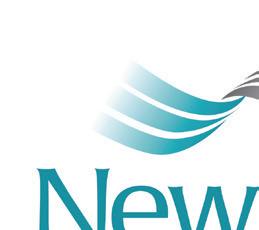

Softens, flattens and improves the appearance of scars


















Protects from irritation and touch sensitivity





























































Cushions scar from bumps and baby kicks


us at www.drinkhydrata.com Email us at info@drinkhydrata.com
Visit
body needs key electrolytes and trace minerals like Vitamin C, calcium, and iron —Hydrata is a clean, pure way to hydrate from nature
Hydrata today with 15% off
first purchase.
MOMS2315
checkout. T r e a t C - s ecti o n s ca r s e a r l y t o p r e ve n t h y p e r t r o p h ic s c a r s a nd ke l o i d s
your
Use code
at
Save 15% by using code HEALTHYMOM15
Pregnancy & Exercise— How Much is Too Much?
You’ve heard it’s important to exercise in pregnancy—but how much may be too much, and are there any restrictions on activities? Experts from the Mayo Clinic weigh in on this question with the following advice.
Exercising in pregnancy has lots of known benefits:

h Boosts your mood and gives you steady energy
h Improves your sleep
h Keeps extra weight gain in check
h Strengthens you and prepares you for birthing
h Lowers your risks of gestational diabetes
h Can shorten your overall labor
h Reduce your risk of cesarean surgery
h And it helps with backaches, bloating, swelling, and even constipation!
But before you ramp up your activity, talk with your pregnancy provider to learn what their concerns may be related to your health and pregnancy. You may be advised to modify or reduce your activity if you have any of the following issues:
h High blood pressure that develops in pregnancy (preeclampsia)
h Complications with your cervix
h Any bleeding or fluids leaking from your vagina especially
in your second or third trimester
h Emerging issues with the placenta
h You’re pregnant with more than one baby
h Preterm labor with a previous pregnancy
If you weren’t super active before conceiving, now is not the time to start a high-energy fitness routine. In fact, walking is one of the best ways you can get all of the benefits of activity, including the super helpful mood boosts, and not put undue stress on your ever-changing pregnant body and baby.
If you were already active prior to pregnancy, ask your pregnancy care provider which activities you used to do that you can continue. You will likely also be cautioned to watch for signs of a problem emerging—if you experience any of the following, stop activity, meet with your healthcare provider, and share what you’re experiencing, including:
h Headache
h Dizziness
h Shortness of breath, especially if this occurs before you start exercising
h Uterine contractions that don’t stop when you rest
h Any fluid leaking or running from your vagina
h Calf pain or swelling
h Muscle weakness, especially if it affects your balance
IMAGES: DREAMSTIME
ISSUE 35 / 2023 Healthy Mom&Baby 29 Join us on Facebook facebook.com/HealthyMomAndBaby ◆ healthy pregnancy
“Let’s Let the Good Times Roll”
Labor is a Process of Movement so let’s Get in the Groove!
By LaShea Haynes M.Ed, MSN, AGCNS-BC, APRN, RNC, C-EFM
Well, you have waited a long time and the big moment for you and your growing family is finally here! You are in early labor—what emotions are you feeling? Probably excitement, nervousness . . . and a bit of euphoria. Last-minute bets are on for the babies’ actual birthdate or birth time.
But no doubt, what will probably also be on your mind is now what?
My body has made it up to this point beautifully; the baby is ready to make its entrance into a whole new world. Hormonally, my body is also doing what it’s supposed to do. Still, is there anything I need to do to get this ball, or should I say baby rolling? Well, the answer is YES!
Why Movement in Labor is So Important
Labor has always been a process of movement; using position changes to work with gravity will help you have shorter labor and feel more empowered in your birthing experience. Research also shows that frequent position changes help you feel more comfortable, and they also help baby with the movement needed to make their exit from your body with their grand entrance into this world. Did you know simply laying/sitting halfway upright and propping your leg on a device like a peanut shaped ball has the bonus of creating a faster labor even as it reduces the need for potential cesarean birth or additional medical procedures (including medications that can make labor more painful and require more intensive
monitoring, decreasing your ability to move, and be in control of your own labor).
Peanut balls help expand the pelvic area, making more space for your baby to move into the larger part of your pelvis called the Pelvic Inlet. Guiding the baby in that direction will give baby the ability to make their entrance by flexing, rotating, and descending through that inlet! Wow, what a journey! Remember, movement and frequent position changes help this process toward baby’s big entrance.
30 health4mom.org healthy pregnancy
For example, frequent position changes can also allow for stronger expulsive, more effective and less painful contractions. Continuous movement (about every 20-30 minutes for position changing) helps to move baby back & forth in the pelvis, which aids in those important movements described.
Your Hormones At Work
Your body’s hormones are working overtime in labor. Did you know your body’s hormones are what supports breastfeeding, maternal-infant attachment, and even bonding? The less we disturb this amazing hormonal process in labor the better chance you have for a birth that is healthy and safe.
How is that you wonder? Well once artificial oxytocin is started, laboring women are more likely to request an epidural. This type of anesthesia decreases your ability to move, walk (even to the bathroom) leading to the use of synthetic oxytocin to compensate. Prolonged use of synthetic oxytocin (also known as Pitocin) may desensitize and or decrease your body’s natural oxytocin receptors and that can even lead to increased risk of a postpartum hemorrhage.
Let Your Body Do the Work
The best way to keep your amazing body doing the work it was designed
to do until your baby is here in your arms is to literally Shake, Rattle and ROLL right through your labor and baby’s birth!
IMAGES: DREAMSTIME
ISSUE 35 / 2023 Healthy Mom&Baby 31 healthy pregnancy
LASHEA HAYNES M.ED, MSN, AGCNS-BC, APRN, RNC, C-EFM is the Editor of Healthy Mom&Baby magazine. Her nursing career spans 25 years. She is the founder and owner of her own nurse mentoring and education company.
Pushing Positions You’ve Got Options, Mama!
By Dr. Danielle Beasley, PhD, RN, RNC-OB, CNE

32 health4mom.org healthy pregnancy
You’ve been laboring when you start to feel the urge to push that baby out! There are many pushing positions; it’s not one size fits all. Pushing can be as brief as just a few pushes and baby is born, to pushing for up to 3 hours.
So, it’s good to try different pushing positions as some may work better for you than others. The American College of Obstetrician and Gynecologists





(ACOG) recommends frequent position changes during labor to enhance your comfort and to promote all of the twisting and turning baby will do before birth.



The standard position so often portrayed on TV and in movies is mom laying on her back with her legs separated and supported by stirrups or with her hands under her thighs. This position may work for you, but there are










alternate positions that you may find more comfortable and could increase your success in having a vaginal birth. More important than the position is your comfort, mom, in labor. This means whatever position is comfortable for you, is the best position for you—until you feel the need to change positions. Two other common pushing positions are side-lying and pushing while in the bed on your hands and knees.
Hands and Knees
Going on hands and knees (all fours) is another way to push more comfortably if you’re experiencing back labor.
With this position, gravity can help to push your baby’s head downward. This position is also beneficial if your baby is in a challenging position and is still trying to rotate through the birth canal.
Pause and rest between contractions, especially if your arms get tired while you’re on your hands and knees for a long period of time. While on hands and knees you can elevate the head of the bed and you can turn around leaning forward to stabilize yourself. This is another helpful time to have a family member assist you with stability.
Side-lying
A side-lying position can be a comfortable position if you’re tired and don’t want to remain in an upright position. Laying on your side increases your rest in between contractions as this position allows your upper body to recline.
The side-lying position enables you to pull your upper thigh toward your chest as you bear down on baby. A family member or your support person can also hold your leg to help keep you positioned on your side.
This position can take pressure off your back and allow you to curl around your baby to promote effective pushing. This position might also reduce your risk of vaginal tearing by opening your pelvis.
Another bonus of the side-lying position is the ability to use a peanut-shaped ball between your legs which will open the pelvic outlet. The ball can be angled so that the leg hooks around the narrower part or aligned with both knee and ankle resting on the ball. If your hips become uncomfortable, you may have to re-adjust the ball. Your nurses will be there to help and support you. If you have an epidural and must remain in bed, side-lying is preferred over lying flat on your back. Lying on your side brings more oxygen to your baby, which can be very beneficial during the pushing process.
If you have epidural pain relief, this may be a difficult position to get into with narcotics or an epidural on board, so you will have to check with your healthcare provider. If you need a break from being on hands and knees, there are other options on how the bed can support you.
Most hospital beds split into three parts. You can control the upper part in a fully upright position, semi-reclined, or flat. The bottom of the bed can also go up and down to create a platform for your feet. This position, with the bed fully up and feet fully down, is great for laboring with an epidural as it puts the best pressure on the cervix as baby descends, while still being comfortable.
Follow your body’s lead and push in positions that are comfortable for you; happy pushing!
IMAGES: GETTY IMAGES; SHUTTERSTOCK
DR. DANIELLE BEASLEY, PHD, RN, RNC-OB, CNE, is the BSN and MSN Faculty Program Director and Assistant Professor at Excelsior University.
ISSUE 35 / 2023 Healthy Mom&Baby 33 healthy pregnancy
Support During Labor & Birth
What’s the Difference between your Partner, Doula, and Nurse?
By Jamie Vincent, MSN, APRN-CNS, RNC-OB, C-EFM
Throughout time, pregnant women have seldom labored alone—rather, they have given birth with support from family, friends, and in hospitals, with support from nurses and pregnancy care providers.
You may have heard that you will need continuous support during labor—but what does that mean?
Continuous labor support means receiving encouragement and expert care from the nurses, and your family or friends who may be with you as you labor.
Continuous labor support helps promote vaginal birth, can shorten the length of your labor, and decrease the need for cesarean surgery. It has also been shown to decrease interventions into birth, including the use of vacuum or forceps. Birthing with support improves outcomes for both you and your baby, and results in fewer negative feelings about your childbirth experiences.
Your nurses and your support persons can provide you with handson comfort and help you progress toward birth. Your nurses will guide
you through shared decision-making around birth choices through clear explanations of procedures and your birthing options.
What are My Options For Continuous Labor Support?
You can seek continuous labor support from your partner or spouse, family members or close friends, from a doula or from your labor and delivery nurse.
Nurses are caring experts who have the goal of educating and supporting your optimal birth and recovery
Childbirth classes often emphasize the importance of labor support and practicing coping techniques for use in labor. You will likely discover that changing your position in labor, focusing on your breathing, and relaxing in between contractions are key coping techniques. You may find that the close relationship you have with your spouse, partner, family member or friend will be all the continuous labor support you will need. However, a more formally trained labor support person may also be what works best for you.

What is a Doula?
Doulas are becoming more common as hired labor support assistants who work directly with you and who also interface with you and your hospital care team so that you can relax and focus on your labor and baby. Doulas are “trained professionals who provide continuous physical, emotional, and informational support to you before, during, and shortly after childbirth to help you achieve the healthiest, most
Continuous labor support results in promoting vaginal birth and fewer negative feelings about birthing experiences.
34 health4mom.org healthy pregnancy
satisfying birth experience possible.”
A certified doula serves as an advocate for you and your family, providing emotional and physical support, sharing information about options and coping techniques, and assisting in communicating your choices and preferences to the hospital staff and your doctor or midwife. Some birthing facilities have developed doula programs and may offer either volunteer or fee-based doula services to birthing persons.
How Do I Find a Doula?
Some hospitals offer volunteer doula services during labor and birth, but many doulas are hired by you—the birthing person. Services doulas offer include but aren’t limited to:
h Helping you create a birth plan that is individualized for you and your family
h Consultations after prenatal visits for additional advice and encouragement
h Support you in the early labor period and suggest breathing and relaxation techniques for labor and birth
h Help you use tools like birthing and peanut balls to get into more comfortable and supported positions that help labor progress and help your baby in moving down into your pelvis
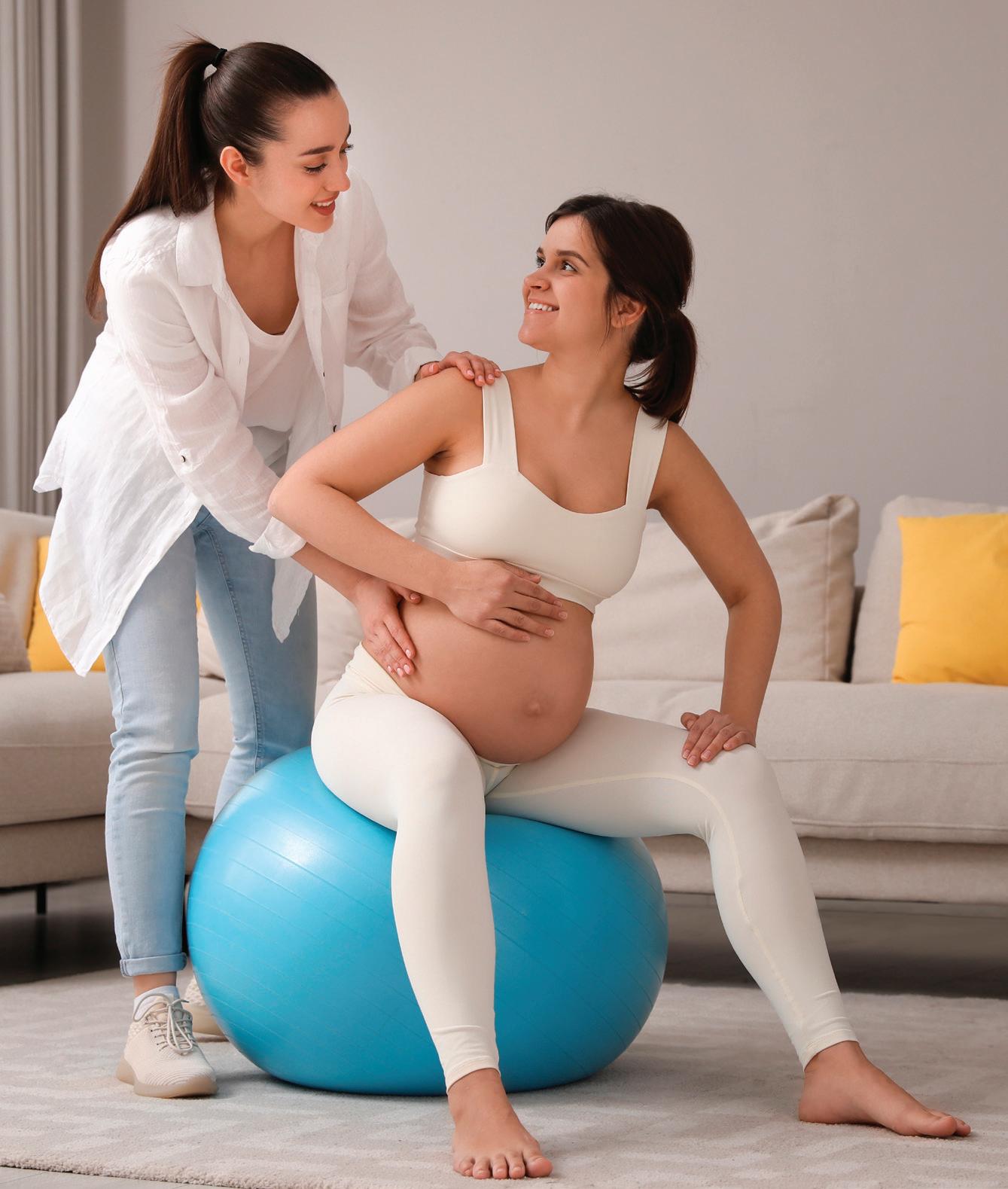
h Visit you shortly after birth to provide postpartum recovery support
h Help you begin and sustain nursing with your new baby
If you are interested in hiring a doula, ask your healthcare provider or friends in local online moms groups for their recommendations, or simply search for a doula near you.
Labor Support From Nurses
If you’re birthing in a hospital, your nurses will provide care and support during labor, birth, and as you begin
postpartum recovery. Nurses will respect the choices that you and your partner make for your health and that of your baby.
Your labor and delivery nurses will be actively engaged in supporting you through your birthing experience, monitoring your baby’s response to labor and uniquely aware of the options available for you at your chosen birthing center or hospital. They can help your partner, family or doula in obtaining blankets, pillows, birthing balls, and suggest helpful positions for labor and provide comfort as they encourage you to remain active during labor.
Nurses can help you navigate the birth center or hospital, explain procedures and interventions, provide information, and make assessments
to share with you as you make informed decisions about your labor and baby’s birth. Nurses will regularly communicate with your pregnancy provider and act as both an advocate and liaison. Your labor and delivery nurse will also respond to emergencies that may occur, ensuring you and your baby have a safe birthing experience. Lastly, nurses are an amazing source of information and education about recovering from birth and what to expect once you’re back at home with baby. Don’t hesitate to ask your questions; nurses are caring experts who have the goal of educating and supporting your optimal birth and recovery.
IMAGES: DREAMSTIME
ISSUE 35 / 2023 Healthy Mom&Baby 35 healthy pregnancy
JAMIE VINCENT, MSN, APRN-CNS, RNCOB, C-EFM is a nurse expert adviser to Healthy Mom&Baby
Essential Oils That Might be Helpful in Labor!
LaShea Haynes M.Ed, MSN, APRN, AGCNS-BC, RNC, C-EFM
La bor is one of those processes and moments in a birthing person’s life that can bring so many different emotions. Many pregnant moms are filled with excitement when labor begins. Later as labor progresses it can bring feelings of fear mixed with anxiety as the contractions get stronger.
On the bright side, you’ve been anticipating and preparing for this amazing day. With a due date in hand, you can attempt to prepare, mitigate, and manage some of the emotions, discomfort, and pain you may experience during birthing.

One way you can work with labor is with essential oils. I know you’re probably wondering, which ones and
are there certain ones that work better for one symptom over another? All great questions; let’s talk about it and try to figure it out!
Aromatherapy in Pregnancy, Labor & Birth
It’s believed that aromatherapy may alter brain waves and behavior to
reduce the perception of stress, increase contentment, and even decrease levels of cortisol, which is the “stress hormone.” Aromatherapy may reduce stress and anxiety with the help of plant extracts and essential oils as it influences the physical, mental, and emotional aspects of our bodies. There are various ways to use aromatherapy: you can essential oils within lotion to rub all over your skin or have your labor support team help you with that. If your support person or partner is available, ask them to add a little massage therapy with essential oil-infused lotion! Another option is to dab a few drops of essential oils on a cotton ball or tissue, and you can inhale the oil as often as you wish.
36 health4mom.org healthy pregnancy
Massage with aromatherapy can provide stronger and more continuous relief from fatigue, especially mental fatigue, during a long labor.
How to Choose Essential Oils in Pregnancy & Birth
But now the question is which oil should you use? This can be more of a trial-and-error process, so start trying various aromas so that you can blend the perfect formula and have it ready for your big day! Be sure to check with your healthcare provider if your pregnancy is considered high-risk, have any allergies, or you are being monitored closely during pregnancy.
Essential oils are easy to find, reasonably priced, and easy to use. So, think about if this is something you might want to add to your grab bag you’re packing for the big BIRTHday party.
LASHEA HAYNES, MED, MSN, APRN, AGCNSBC, RNC, C-EFM, is the Editor of Healthy Mom&Baby magazine. Her nurse career spans 25 years, and she is founder and owner of her own nursing mentoring and education company.
Essential Oils for Labor
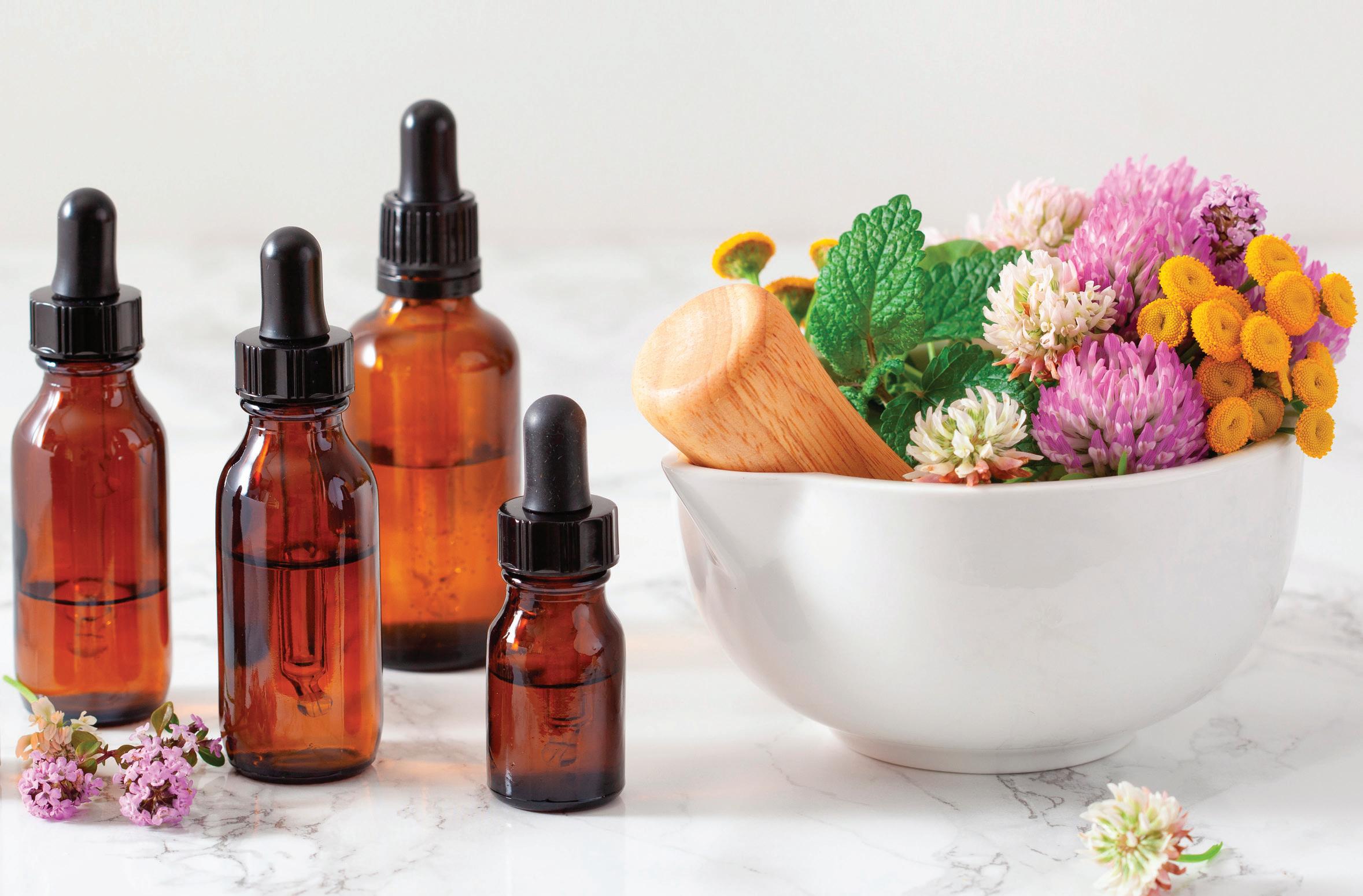
Here are just a few popular options:
X Citrus blossom oil: Researchers have said this oil can reduce anxiety and help to lower pain levels
X Jasmine oil has been shown in studies to ease labor pain and discomfort. This flowery oil would be great during a back rub or massage of the lower back to reduce pain and back pressure in labor. Word of caution: This oil can also stimulate contractions and for that reason shouldn’t be used in pregnancy
X Sage oil is commonly used to soothe menstrual cycle pain. Researchers say clary sage oil is known to be safe in labor to help you remain calm and soothe pain. However, Clary sage is NOT to be used during pregnancy as it has been known to induce contractions
X Peppermint oil can easily be found and has multiple natural remedy usages. Peppermint oil can help with nausea, headache pain, or dizziness. Some laboring moms experience tension headaches and nausea, especially during transition phase (8-10 cms dilated). Finally, you can also use peppermint for a boost of energy that might be needed in labor or during the pushing phase
X Lavender oil has been shown to reduce crying in infants and promote sleep in infants and adults. This oil may help to improve sleep and even ease insomnia without the sleepiness you may feel after taking some over the counter medications. Try massaging a little lavender on your sore muscle tissue such as on the shoulders and back
IMAGES: GETTY IMAGES; DREAMSTIME
ISSUE 35 / 2023 Healthy Mom&Baby 37 healthy pregnancy
Placenta Wisdom, Rituals and Traditions: Know Your Placenta’s Worth!
By Essence Williams, MSN, BSN, RNC-MNN, CCB, LCCE
38 health4mom.org healthy pregnancy
Depending upon your customs and beliefs, your baby’s placenta may hold signifi cant symbolic and spiritual meaning for you. In many cultures, the placenta is considered precious, sacred, and powerful—even worth more than gold!
It’s a remarkable organ that is your baby’s fi rst home as it supplies oxygen and blood fl ow, cleansing your baby of unwanted toxins and helping with infant metabolism. The placenta is also responsible for nourishing and protecting your baby and contains hormones required for pregnancy and breastfeeding.



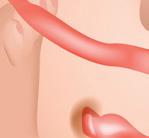



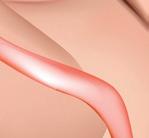





It’s common practice for many hospitals and healthcare facilities to dispose of placenta like medical waste. However, many parents, doulas, nurses, and midwives honor the placenta appreciating its worth. The placenta plays a tremendous role in ancient traditions and holistic and alternative medicine. Studies show that the placenta can be used for a variety of remedies, rituals, and traditions. One of the most common customs is placenta burial rituals. Let’s take a trip with the placenta around the world.
Global Placenta Traditions







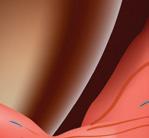
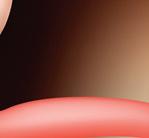















In Bali, the placenta is known as “AriAri,” and considered a physical body of the child’s guardian angel whose spirit stays with the child for life. The Balinese wrap the placenta in cloth, place it in a coconut and bury it.
Native Icelanders call the placenta, “ fylgia ” which literally means “guardian angel.” In Hmong culture, the word for placenta means “jacket.” The placenta is believed to be a spiritual jacket that the baby wore to come into the world.
Honoring Connections to Land & Heritage
In some cultures, burying the placenta connects the baby to land and heritage. Among the Navajo and Hawaiians, the placenta is placed in the ground to connect the child to their


homeland and ancestors.
Families in the Caribbean bury their baby’s placenta under a fruit tree ensuring that the child will never go hungry and will always come home. Among the African Igbo, the placenta is called “Our Mother” and connects the child to the spirits in the ground when burying it.
For Kikuyu in Kenya, both the placenta and the umbilical cord symbolize a bond and a sacred attachment to the mother and the child. It is deposited in an uncultivated fi eld and covered with grass and grains as a symbol of fertility.


The Mayans also honor the sacred bond between the mother and her baby by burying it under a special tree that gives protective powers over the child. In both the Japanese and Chinese culture, placenta burial is believed to bestow blessings or protection for the child’s future.
Origin of the Soul














In cultures with postpartum rituals, location of placenta burial matters. In Cambodia, the placenta, known as “the globe of the origin of the soul,” must be




buried in a special location designed to protect the baby from bad spirits. In Malaysia, the placenta is considered a baby’s other sibling, whereas in Mexico it is viewed as it’s “el compañero ” or companion.
Placentas in Korea are given names depending upon their birth month before performing a ritual burial. Whereas in Turkey, parents who want their child to be noble and honest bury the placenta in the courtyard of a mosque.
There are a host of placenta rituals across cultures and many lands. What are the rituals regarding honoring the placenta in your culture? These customs and beliefs should be honored and respected so feel free to share your request to receive the placenta postbirth, as may be desired, with your pregnancy healthcare team and share your placenta’s worth!







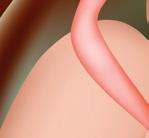


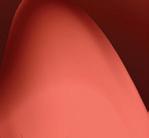


IMAGES: GETTY IMAGES; SHUTTERSTOCK
ESSENCE WILLIAMS, MSN, BSN, RNC-MNN, CCB, LCCE, is a maternal child health nurse who manages the clinical nursing component of a high-risk perinatal program affi liated with the Southern NJ Perinatal Cooperative. She also works in collaboration with Cooper University Hospital, Osborn Family Health Center and CAMCare in Camden City, NJ.
ISSUE 35 / 2023 Healthy Mom&Baby 39 healthy pregnancy
TAKE YOUR TIME BACK
Top Chef Meals: A customizable meal delivery service perfect for you and your partner—from pregnancy to postpartum and beyond
Eating well can be tough in general, but during your pregnancy and postpartum journey, it’s easy—and understandable!—to devote your time and energy to other things. Planning, prepping, cooking, and cleaning are likely at the bottom of your to-do list each day.
At Top Chef Meals we provide delicious and nourishing food, delivered right to your door. We source the best ingredients from trusted local partners, and our team of chefs cook all your meals fresh and made-to-order. The best part? Our meals are customizable, so you can mix and match your favorite side dishes and indulge your everchanging cravings.

We also offer dieticiandeveloped options to accommodate special diets including Low Sodium, Low Carb, Renal, Diabetic, and Gluten Free . No matter your preference or dietary needs, our meals are made with no artificial ingredients, GMO’s, preservatives, trans-fats, or


high fructose corn syrup. In addition to our collection of customizable meals, our Specials Menu offers a rotating assortment of chef-curated dishes made with the season’s best ingredients.
Since your day doesn’t start with dinner, we also offer options for breakfast, lunch, and dessert—so you can free up your time and focus on baby.

Simply visit our website to pick your meals, and we’ll do the rest. Place your Top Chef Meals order today!


TopChefMeals.com
Use code HMB2023 for 10% off your first order
 Chicken Fajita Bowl
Shrimp Pesto Cavatappi
Roasted Vegetable & Eggwhite Sandwich with Turkey Bacon
Braised Boneless Short Ribs
Chocolate Mousse Layer Cake
Chicken Fajita Bowl
Shrimp Pesto Cavatappi
Roasted Vegetable & Eggwhite Sandwich with Turkey Bacon
Braised Boneless Short Ribs
Chocolate Mousse Layer Cake
Strategies for Healthy Eating in Pregnancy
By Rene Ficek, RD
Healthy eating in pregnancy is easy, and these 5 strategies are all you need!
1. Consume Enough Folic Acid, Iron, and Protein

Begin taking a prenatal vitamin before you’re pregnant, and continue after baby’s birth until you stop breastfeeding. A prenatal gives you folic acid to reduce the chances of neural tube defects like spina bifida. You can also boost folate, iron, and protein through lean proteins, dark leafy greens, broccoli, and citrus.
During pregnancy, it’s not uncommon to need additional iron. Eat dark leafy greens, soy, beans, lentils, seeds, and meats with citrus to help your body absorb the nutrients in iron-rich foods.
Your protein needs double in pregnancy to support fetal growth and milk production. Meet those needs through vegetables as well as animal or fish proteins. Try highprotein grains like quinoa; beans, legumes, lentils, nuts, and seeds that are protein-rich.
2. Cook Foods Properly
All meat, fish, and eggs need to be cooked to recommended
temperatures to avoid food-borne illness, specifically a bacterial infection called listeriosis. While its rare, you can encounter it in foods like deli meats; it can be fatal for your developing baby. Just to be safe, avoid the following:
h Seafood: No sushi, sashimi, or raw oysters. Cooked shellfish is fine but don’t eat any mussels or clams that didn’t open during cooking. Avoid refrigerated, raw seafood like novastyle lox and smoked fishes. Always cook fish to 145º F.
h Processed meats: Listeriosis may lurk in ready-to-eat meats including hot dogs and deli meats as contamination can occur during packaging. Skip processed meats while gestating.
h Animal proteins: Just say no to rare or medium-rare proteins, and cook meat to a minimum of 160º F; cook chicken to 165-180º F.
h Avoid refrigerated pâtés or meat spreads.
3. Limit Caffeine
Coffee lovers rejoice; experts agree small amounts caffeine during pregnancy are ok, such as one 12-ounce coffee, or roughly 200 mg of caffeine. Teas, chocolate, energy
drinks, and colas contain caffeine that to your daily limit.
You’re more sensitive to caffeine when pregnant because it lingers longer in your system. If you’re drinking caffeine so is baby; as it crosses the placenta. Caffeine can reduce blood flow to the placenta, affecting baby’s birth weight.
4. Skip Unpasteurized Products
Unpasteurized dairy products may also contain listeria, which can cause miscarriage if it crosses the placenta. Skip all soft cheeses: Brie, Camembert, Roquefort, Feta, Gorgonzola, and Mexican-style cheeses unless clearly labelled as made from pasteurized milk.
5. Avoid Foods High in Mercury
Omega-3 fatty acids in fish can promote your baby’s brain and eye development. However, avoid fishes high in mercury, which is a neurotoxin. Skip swordfish, shark, mackerel, and tilefish. Limit light tuna to no more than 2 tuna meals a week.
IMAGES: DREAMSTIME
ISSUE 35 / 2023 Healthy Mom&Baby 41 healthy pregnancy
RENE FICEK, RD, is a registered dietitian and a certified diabetes educator.
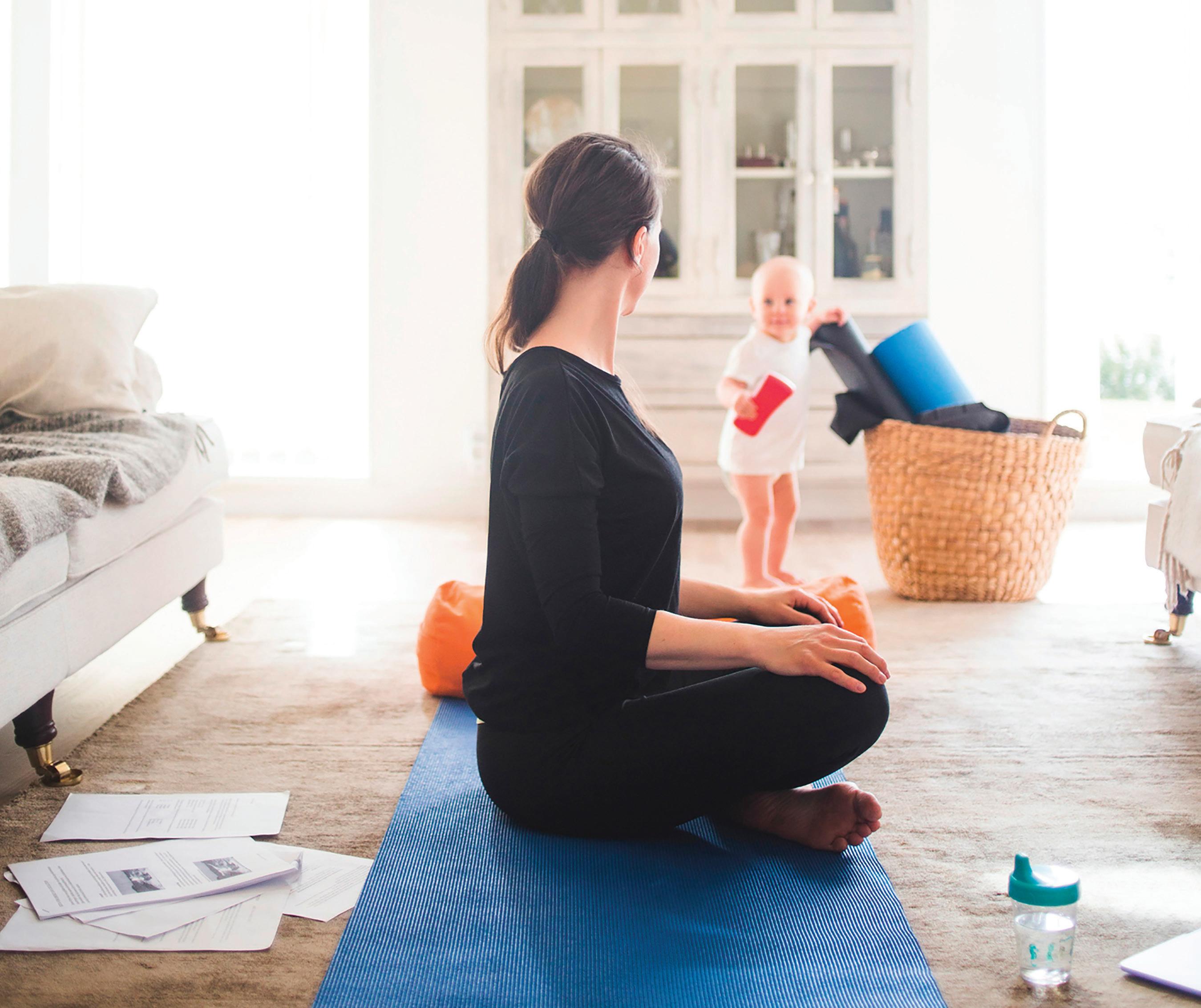
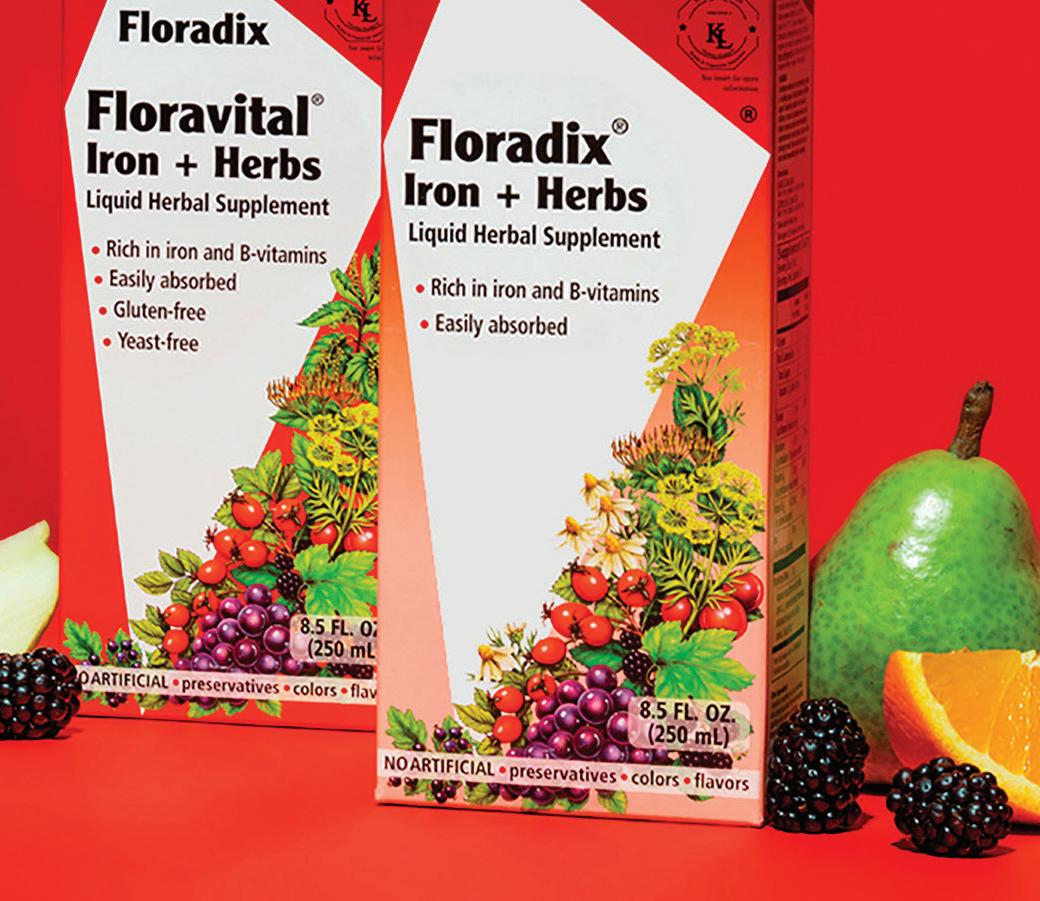









Life,
New and soon-to-be-moms take America’s #1 liquid iron supplement to energize their wellness†* † SPINS Vitamins & Minerals Iron: Natural Channel 52 Weeks End 4-Dec-2022 * THIS STATEMENT HAS NOT BEEN EVALUATED BY THE FOOD AND DRUG ADMINISTRATION.THIS PRODUCT IS NOT INTENDED TO DIAGNOSE, TREAT, CURE OR PREVENT ANY DISEASE.
absorbed, non-constipating, gentle-to-digest plant-based liquid extract*
activated
Easily
How To Choose The Right Prenatal Vitamins
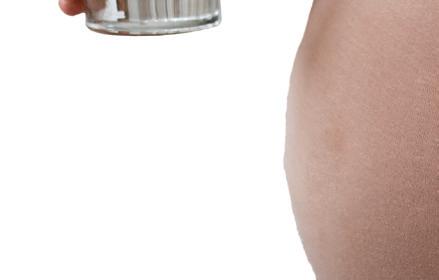



During pregnancy, your body needs additional vitamins and minerals for you and your growing baby. A daily prenatal vitamin is your insurance against any deficiencies from conception through pregnancy and breastfeeding.
Start prenatal vitamins before conceiving to support baby’s earliest development. Your prenatal should have at least 400 mcg of folic acid to prevent neural tube defects, which occur in the first 28 days of pregnancy, often before you even miss a period.
Vitamins, Minerals & More
Folic Acid: Folic acid is the synthetic form of the B vitamin folate, which is found in leafy greens. Some prenatal vitamins have 800 mcg of folic acid, which is safe and helps prevent birth defects. If you’ve had a pregnancy affected by a neural tube defect you may need even more folic acid.
DHA: Want to nourish a smarter baby? Many prenatal vitamins include DHA (docosahexaenoic acid), an omega-3 fatty acid that promotes baby’s brain and eye development. Salmon, walnuts, and flax seeds are good sources of omega-3.
Vitamin D: You need 600 IU/day of vitamin D during pregnancy. Most prenatals have 400 IU, so you’ll need to supplement. Excessive amounts of vitamin D can be too much of a good thing—don’t exceed 2,000 IU to 4,000 IU a day.
Calcium: Calcium helps protect against bone loss during pregnancy—super helpful when you’re growing another skeleton! Get 1,000 mg per day. If dairy’s not your thing, eat calcium-rich
foods like broccoli, kale, white beans and oranges.
Vitamin B6: It ain’t easy being queasy. Vitamin B6 can ease nausea and morning sickness; experts advise 50 mg of B6 daily.

Iron: If you’re prone to iron deficiencies, choose a prenatal with a higher level of iron; just know iron can cause nausea and constipation. If you’re not anemic, get at least 27 mg/ day. Find it in lean red meats, chicken, fish, dried beans and peas, and prune juice. Absorb iron better when you eat including tomatoes and citrus fruits.

Choose Wisely
Not all prenatal vitamins are created equally, and not all supplements have been tested for safety in pregnant women. Choose your prenatal carefully and stick to meeting your basic needs— think maximum impact with the minimum number of daily supplements.
For example, too much vitamin A can be harmful to your baby and is often reduced in prenatals, which is one reason why a regular multivitamin just won’t work during and after pregnancy.
And prenatal vitamins won’t make up for poor eating—get the nutrition you and your baby need each day through your food.
Does your throat close at the thought of swallowing a capsule? Look for a chewable, liquid or even gummy prenatal vitamin.


Skip herbal supplements—many are considered too risky for baby. Discuss herbs or other supplements with your healthcare provider before you take them.
By Tamera L. Young RN, MSN

What You Need From Your Prenatal Vitamin


Folic acid 400 mcg
Vitamin D 400 IU
Vitamin C 70 mg
Vitamin B12 6 mcg
Vitamin E 10 mg
Thiamine 3 mg




Riboflavin 2 mg
Niacin 20 mg
Zinc 15 mg

Calcium 200 to 300 mg
Iron 27 mg
IMAGES: DREAMSTIME
ISSUE 35 / 2023 Healthy Mom&Baby 43 healthy pregnancy
TAMERA YOUNG RN, MSN , is an expert nurse adviser who writes for Healthy Mom&Baby
The Importance of Skin-to-Skin
By Patricia Scheans, DNP, NNP-BC
You may have already included the request in your birth plan to have your baby placed on your chest immediately after birth, but did you know that this is the best place for your baby to remain for the first couple of hours of life? And for you and baby to reconnect through nursing and everyday care? Here is the importance of skin to skin.
Your baby is going through so many changes at birth. They are adapting from a warm, water-filled environment where the placenta did the breathing and feeding for them to a cooler, airfilled environment where they now have to breathe on their own, regulate their own temperature and maintain a stable blood sugar level.

Go Skin-to-Skin
You can help baby make this transition simply through skin-to-skin contact with them from birth onward. You may find that baby fits best lying across your breasts or in between them. Once baby is snuggled into your bare chest wearing only their diaper, cover their back with a warm towel or blanket and leave them there, regularly checking their breathing and overall wellbeing. This is nature’s ideal way of connecting you and your baby from birth.
Research shows skin-to-skin contact in this position will help baby maintain
body temperature, breathe easier, and hold a more stable blood sugar. Did you know that your body responds to your baby’s presence hormonally and warms your chest and breasts, or cools them down, in response to what your baby needs?
This hormonal and blood flow to your chest also supports nursing by helping your milk come in. It also releases those hormones that make you feel happy and loving toward your baby.
Most babies are very awake and alert right after birth and will want to nurse within minutes of being born. Having your baby on your chest helps this happen. Through your skin, baby can also hear your heartbeat, a comforting and familiar sound to them! Babies snuggled skin-to-skin tend to cry less, even through painful experiences like when a healthcare provider obtains a blood sample.
Stand Up for Snuggling
Be warned, healthcare professionals and family members alike can inadvertently interfere with this important skin-toskin time. Stand up for your baby’s right to have the best start with you. Ask your healthcare providers to perform any essential assessments with baby on your chest, and delay those that can wait an hour or so. Know that if you have HIV or hepatitis, then your baby must
be bathed to remove any blood before being placed on your chest.
Family members can wait too: Ask them to watch you as a pair and wait to hold baby until later – you’re recovering from birth. Include these desires in your birth plan and talk to your caregivers – both experts and family members –ahead of time. Designate your partner or someone else to provide this care should you have a medical problem that prevents you from holding your baby right after birth.
After the first hour or two, share the love, letting your partner practice skinto-skin care as well, and take this good habit home with you.
Keep Your Baby Close to Your Chest
h Your body responds hormonally to what your baby needs by warming or cooling your chest and breasts
h Skin-to-skin contact releases hormones that make you feel happy and loving toward your baby
h Most babies are alert right after birth and will want to nurse. Having your baby on your chest helps this happen
h Through your skin, your baby can hear your heartbeat, a comforting and familiar sound to them!
IMAGES: DREAMSTIME
44 health4mom.org healthy pregnancy
PATRICIA SCHEANS, DNP, NNP-BC is a neonatal nurse practitioner in Portland, OR, at Legacy Emanuel Medical Center.
Omni Swaddle Sack



Unique Arms Up 1/2 Length Sleeves with Mitten Cu s
Skin to skin is so important while mom or caregiver is awake, but when mom or caregiver needs to sleep, according to the AAP, baby needs to sleep in their own space such as a bassinet. You can help baby sleep better in their own safe space by using the developmentally supportive Omni Swaddle Sack by SwaddleDesigns. Created by a nurse and mom for your baby’s best sleep.
Cu
www.SwaddleDesigns.com

One
FEEL LIKE A WOMAN, NOT A PATIENT
Wear it during labor and get full coverage to move around (it covers your butt!). Wrap style back opens fully for epidural access and front slit opens for fetal monitoring and pelvic exams.

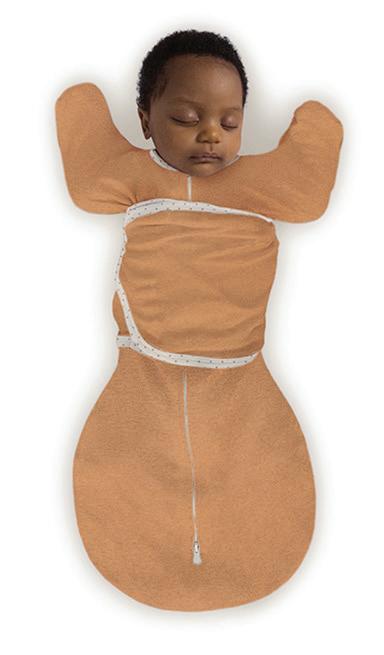
IMMEDIATE SKIN TO SKIN BONDING
REST WITHOUT WORRY
Labor is hard work! Enjoy snuggle time while you rest* without fear of dropping baby if you start to doze off.
*Not intented to use with baby while you sleep
The patented alternative to the typical hospital gown, it maintains skin to skin contact while reducing baby’s risk of falling. now:

Golde n Hour
Closed More Options for Baby, More Sleep for Everyone ® Hip Healthy by Angel Wraps Baby, LLC | US Patent 11,406,145 B2



skintoskingowns.com Save $25 Use code skin2skin 1. Neczypor JL, Holley SL. Providing Evidence-Based Care During the Golden Hour. Nurs Womens Health. 2017 Dec;21(6):462-472. doi: 10.1016/j.nwh.2017.10.011. PMID: 29223210.


The initial hour or so after birth when skin to skin bonding is crucial for stabilizing baby's vitals, helping to stimulate milk production, and reducing the risk of postpartum depression.1

Used by Hospitals to Promote Safe Sleep
US Patent D924,539 US Pat. 11,659,870 B2 Arms Up & Out Cu s Closed
One arm out
Snug Swaddle Arms to Chest Open Cu Arms in Hands by face Arm Out for self-soothing
S k in to Skin Gowns
Make the first moments of meeting your newborn safe and secure
Shop
After birth, baby can be placed right on your chest and gently held in place with the patented bonding panel.
Top Must-Have Self-Care Items Following Vaginal or Cesarean Birth
 By Shawana S. Moore DNP, MSN, CRNP, WHNP-BC
By Shawana S. Moore DNP, MSN, CRNP, WHNP-BC
Recovery after giving birth— either vaginally or by cesarean surgery—can take at least 4-6 weeks, or longer. Recovering from birthing requires time and patience as your body heals. As you embrace your post-pregnancy phase, please take time to allow yourself to heal and transition with your new baby.
Stash These Items Before Birthing
To support you during this process, here’s a list of “must have” items most nurses recommend in aiding your restoration. You may experience a wide range of symptoms during the first six weeks of your post-birth recovery. You can expect to have bleeding, perineal
pain, sore nipples, fatigue, constipation, just to name a few. Stash these helpful items at home to support your recovery process.
Maternity Pads: Your uterine lining was home for baby, and it will now shed after the birth causing vaginal bleeding known as lochia. The bleeding will be
46 health4mom.org healthy pregnancy
like a long, heavy period, and you may bleed for 3-10 days. Some women continue to have spotting for another six weeks. You should exclusively use pads during this time as tampons can introduce bacteria into the vagina canal.
Perineal Spray: An over-the-counter local pain spray, ointment, cream, or pad will help with postpartum perineal pain. Some perineal sprays contain benzocaine, ale, lanolin, and menthol, which soothe and moisturize damaged skin.
Peri-Rinse Bottle: You will likely receive a peri-rinse bottle at the hospital; it will be helpful to keep your perineal area clean and infection-free. This is especially important if you had an episiotomy or tearing during birth. Rinsing with warm water after urination helps reduce a burning sensation some women experience, and it keeps the area clean.
Warm Bath or Sitz Bath Device: Soak in a warm bath daily for 15- 20 minutes to ease perineal pain following vaginal birth. Warm baths provide relaxation, reduce itching, and soothe soreness. Don’t have a bathtub? Use a sitz bath basin you can rest on your toilet seat filled with warm water.
Stool Softeners: You may have weakened abdominal muscles and constipation from using pain medication during or after birth. Drink plenty of water, fill up on fiber, and take short walks to get your system back on track.
Perineal Cooling Pad: Apply a cooling pad to your perineum every couple of hours for the first day or two following a vaginal birth to reduce swelling and discomfort. Some perineal cooling pads absorb bleeding and don’t require freezing for use.
Overnight Nursing Bra: Wearing a well-fitted and comfortable nursing bra
is an essential part of your wardrobe post-pregnancy. Cotton/spandex blend products are excellent because they’re soft and stretchy. You may want to avoid bras with hooks, plastics, or metals, to be more comfortable.
Nursing Cooling Pads: You may experience sore or cracked nipples while nursing. Using a cooling pad made for sore nipples can soothe and heal your breasts. Consider storing them in the refrigerator for added cooling comfort.
Organic Coconut Oil: Coconut oil is great for soothing sore nipples as it moisturizes irritated skin.
Recovering From Cesarean Birth
Recovering from a cesarean birth typically takes longer than from a vaginal birth. It may take at least four to six weeks at home before you feel somewhat back to normal. Stash these products for extra help and support:
Cesarean Scar Prevention: You can use creams and scar ointments to assist in reducing the appearance
of your cesarean scar and promote its healing.
Postpartum Belly Binder: A belly binder can support your stomach, and the incision site, by helping decrease pain and discomfort following cesarean surgery.
Supportive Underwear: Wearing high-waisted underwear that doesn’t rub across the incision will cut down on irritation and itching in the healing scar area.
Nursing Pillow: Using a breastfeeding/ chestfeeding pillow is a great way to keep pressure off your tender stomach. Additionally, consider using a nursing pillow against your incision when sneezing or coughing to provide additional abdominal support. You may also want a pillow that provides back and lumbar support, especially after cesarean surgery.

IMAGES: ADOBE STOCK; DREAMSTIME
ISSUE 35 / 2023 Healthy Mom&Baby 47 healthy pregnancy
SHAWANA S. MOORE DNP, MSN, CRNP, WHNP-BC is a women’s health nurse practitioner. She serves as an Assistant Professor and the Director of the Women’s Health Gender-Related Nurse Practitioner Program at Jefferson College of Nursing.
Slow down!
meGivetime.






Nobody likes to be rushed, especially babies.
Your baby needs at least a full 40 weeks of pregnancy to grow and develop. Inducing labor even a week or two early is associated with a host of risks, including prematurity, cesarean surgery, hemorrhage and infection.
While it may seem convenient for you or your health care provider, labor should only be induced for medical reasons.
Your baby will let you know when he’s ready to come out, so give him at least a full 40 weeks.


Relax.
What’s the hurry?







Don’t rush me! Download a free copy of 40 Reasons to Go the Full 40 at www.gothefull40.com. The nurses of AWHONN remind you not to rush your baby—give him at least a full 40 weeks!
40!Gofor AWHONN PROMOTING THE HEALTH OF WOMEN AND NEWBORNS
Third Trimester Sounds Essential for Baby’s Development
Premature babies, especially those who are receiving care in a Neonatal Intensive Care Unit (NICU), hear far fewer everyday conversations and more beeps and blips from monitors than their counterparts born at or after term.
With all the challenges of being born early, premature infants are exposed to a completely different soundscape than babies that remain in the womb for the full course of pregnancy. “The intrauterine environment is unique, with constant, primarily low-frequency sounds of the mother’s cardiovascular and digestive systems and voice transmitted to the fetal ear via amniotic fluid,” said University of Illinois Urbana-Champaign speech and hearing science professor Brian Monson.
In contrast, infants in neonatal intensive care units are

more so exposed to electronic and mechanical sounds, the beeps and alarms. They only hear language when nurses or parents are nearby. Babies begin to hear around 23 weeks gestation; in later pregnancy a baby will begin to recognize the voice of its mother.
Deprived of the sounds normally heard in the womb, “very preterm infants also spend long periods in silence, a condition that never occurs in utero,” the researchers wrote. For NICU infants, the sound exposures were constant for each 24-hour period, whereas fetuses experience a much more pronounced day/night cycle of sounds in their mother’s belly. Remedying this difference may allow the preterm infants to establish a healthy circadian rhythm, Monson said.
IMAGES: DREAMSTIME
ISSUE 35 / 2023 Healthy Mom&Baby 49 healthy babies Join us on Facebook facebook.com/HealthyMomAndBaby ◆
When Baby Needs Intensive Care
What to expect if your little one is admitted to the Neonatal Intensive Care Unit
 By Jennifer Peterman, BSN, RN, IBCLC
By Jennifer Peterman, BSN, RN, IBCLC
So me babies need extra medical care when they are born. Maybe they are born a bit early, or they emerge with a special medical need, or maybe they’re just having trouble adjusting to life outside the womb. Here’s what you need to know to navigate a NICU (newborn intensive care nursery) stay.
Neonatal Intensive Care Unit (NICU)
The name may sound scary but it’s where babies who need special care can be closely monitored and be supported in their growth and development. A whole host of newborn specialists provide care including doctors (neonatologists),
NICU nurses, nurse practitioners, nutritionists, social workers, specialists in breastfeeding, and respiratory therapists, to name a few. Each specific expert provides something your baby uniquely needs.
As baby’s parent, you’re always welcome to be with baby in the NICU; some facilities have remote
50 health4mom.org healthy babies
video monitoring for when you can’t be at the hospital. Ask the care providers about the specific goals and expectations for your baby. Most NICU’s provide access for visiting parents at any time of day.
Navigating NICU Care
Use these tips to ensure your baby is getting the best possible care:
h Keep a notepad of questions you want to ask and bring them up during your visit
h Keep asking “why?” until you fully understand what baby’s care team is sharing with you
h Ask team members to explain medical terms you don’t understand, or check your understanding with them
h Keep a journal or notepad to track baby’s milestones, discussions with care providers, and any information you need and retain lasting memories for your growing family
Get to know the expectations and the routine of the unit:
h What are the visiting policies and any specific hours or restrictions?
h When is the best time to speak with a care provider?
h How can you nurse or feed your baby with you own human milk?
h Can you give your baby a bath?
h What can you bring from home to ensure baby feels your presence when you can’t be there?
Talk with the nurses about the benefits of human milk for your baby as it provides a higher level of nutrition and protection from illnesses and diseases, which can be really beneficial to a baby born a little early.
Human milk is full of antibodies that protect your baby. This is especially essential for premature babies, who are more vulnerable to disease. If your baby is not yet eating, start pumping your milk. Pumping 8-12 times a day will help get your milk supply ready so baby can start feeding with mom’s
own milk. If you can’t provide your own milk, ask about donor human milk. Many NICU’s provide this option because of how essential human milk is for babies.
Caring for Your NICU Baby & Yourself

An important aspect of caring for an infant in the NICU is recognizing and protecting the vulnerability of your baby, and others like them. Be mindful of infection and always wash your hands before holding or touching your baby. Please avoid visiting if you feel sick. A small cold for you can be much more serious to a newborn.
Take the time to take care of yourself, and your partner and other children if baby has siblings. This is a stressful time for families simply because you’re separated and you’re concerned about your newborn’s health and development. You may experience many different emotions during this time. Please know that this is normal. With all the focus on the baby, parents often forget about
Practice Kangaroo Care
Ask about holding baby skin-to-skin, which is sometimes called “kangaroo care.” Lay baby naked (except for a diaper) upright on your bare chest so that baby gets the physical benefits of connecting with you. Did you know that this stabilizes baby’s heart and breathing rates, keeps baby warm and their blood sugar more stable. You can do this even while baby is attached to IVs and oxygen.
themselves. Consider connecting to a support group or connect with other NICU parents. You can find an online group at Postpartum.net or a HandtoHold.org.
IMAGES: DREAMSTIME
JENNIFER PETERMAN, BSN, RN, IBCLC, is a clinical practice leader on postpartum and well baby hospital units. She is also a certified lactation consultant.
ISSUE 35 / 2023 Healthy Mom&Baby 51 healthy babies

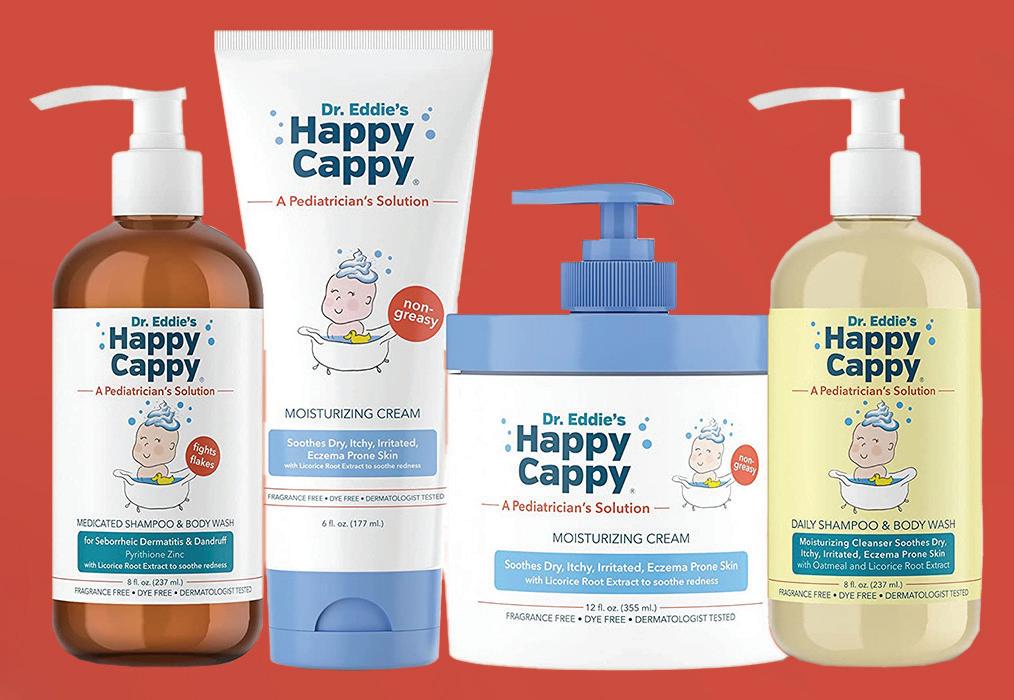






A PEDIATRICIAN’S SOLUTION FOR CRADLE CAP, SEBORRHEIC DERMATITIS, DANDRUFF, & DRY, ITCHY, ECZEMA-PRONE SKIN PRODUCTS WITH A PURPOSE Fragrance Free Dye Free Dermatologist Tested Pediatrician Created Find out more – HappyCappy.com FOLLOW US @healthymomandbaby
Baby’s Best Bedtime Routines


Every baby has its preferences when it comes to naps, feeding, playtime, and bedtime. Hey parents, one of the most important gifts you can give your baby is the benefi t of a bedtime routine. We’ve got three tips to build a better routine for baby at bedtime.

Adequate sleep for a baby is essential for their development. Keeping a consistent and individualized routine for baby’s bedtime will help give your family consistency, organization, and clear bedtime expectations.




Set a Timeframe















First: Set a timeframe. You can’t spell bedtime without the word “time.” Setting a regular time to prepare for sleep creates a routine.
Choose a time that’s most convenient for your family, that meets your baby’s needs, and allows you to give your full attention to baby.
By Lakisa Ballard, RN, MSN, C-EFM, RNC-OB




Perhaps fi rst bathing your baby, then feeding them after their warm bath helps your little one prepare for sleep.


Silence cell phones during this time. It might take a few trial runs for you to fi gure out what works best for baby in terms of relaxing and self-soothing into sleep.
Prep for Bedtime
Assemble what you’ll need for baby’s routine, such as a pacifi er, soft music, or a soft blanket that comforts your baby as you rock them. If you know your baby likes to hear a bedtime story, make sure it’s within your reach as you lull baby to sleep near their crib. As baby drifts off, set out their clothes and diapers and wipes to prepare for tomorrow.
Ease into the routine; it will take time for you and your baby to adjust. This might take a few days or even a few weeks before you’ve both settled into a routine.


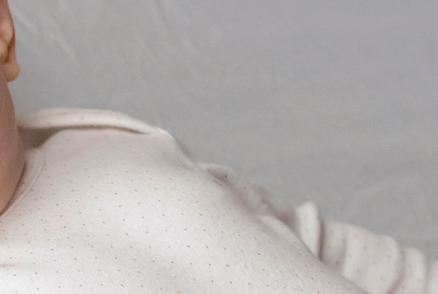

In the beginning you might experience resistance from baby, so continue to console your baby with the things they like to put them at ease. Resistance is normal, as time goes along your baby will get in a rhythm as you stay consistent in your practice.
Some days your routine will be completely off and that’s totally normal. Give yourself grace and know you’re doing a great job. If baby remains fussy try shifting bedtime slightly to fi nd the best time for your routine.
Know that every attempt at a bedtime routine helps with not only your baby receiving a good night’s rest but you as well. Sweet dreams to your growing family!
IMAGES: DREAMSTIME
ISSUE 35 / 2023 Healthy Mom&Baby 53 healthy babies
LAKISA BALLARD, RN, MSN, C-EFM, RNC-OB, is a Labor and Delivery Clinical Nurse Educator at Holy Cross Hospital in Maryland. She has worked in many high-risk facilities around the country and has a passion for educating future nurses.
Six Essential Tips for Traveling with Baby
By Carolyn Davis Cockey, MLS, LCCE
Hey parents, who hasn’t dreamt of a relaxing vacation seaside or a mountain-scape adventure now that your little one is starting to walk and explore their world? Preparing for traveling with a new baby requires careful planning and attention to detail. Here are some steps you can take to ensure that your trip goes smoothly:




















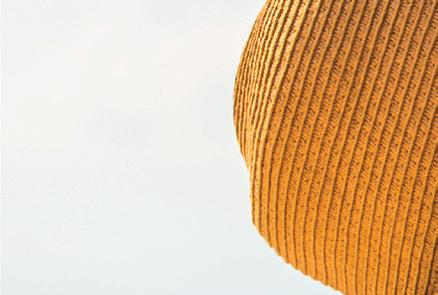





Consult with your baby’s pediatrician: Many parents may not think of a quick call or visit with the pediatrician before heading out on holiday. But experts recommend a quick check up and discussion of your travel plans to ensure baby is healthy for travel, and to grab a quick copy of baby’s health history, “just in case.” Add to your packing list:
List of vaccinations






















Needed medications if any















Pick a baby-friendly location: Is your lodging on a beach or near a park? Does the facility have helpful devices like cribs, pack-and-play’s, or high chairs? How about an in-room refrigerator, small kitchenette, or microwave? Ask for a room in a quiet location to ensure other guests don’t disrupt baby’s nap as they come and go. Are there private cabanas where you could feed or change your baby?
Pencil a packing list just for baby: Include all the essentials: extra clothes, food including your expressed milk, snacks, diapers, wipes, bottles, pacifiers, baby clothes, and toys. Double-down on comfort items like pacifiers, blankets, and soft toys or plushies.
Buy baby a seat: If the budget allows, buy a plane or train seat just for baby. You can roll baby to the gate in their car seat attached to their stroller, gate check the stroller and carry baby and their car seat on board for safety and convenience. When traveling by plane,
know that your baby’s seat must have an FAA-certification tag from the manufacturer or you’ll be asked to gate check it pre-boarding.
Bring a practical stroller: This could be a jogging or collapsible stroller that can do double-duty as a napping or eating space as you set forth. A comfortable stroller with handles at an adult comfort level will help prevent backaches and a less than satisfying trip. Use the stroller to roll baby through airports and when you go out to see the sights.
Keep calm and carry on: Prepare for the fact that at some point, you’re going to say, “I wish we . . .” jot that idea down for the next big trip. By following these tips and remaining flexible, you’ll soon be a pro at traveling with your little one. Happy travels!
CAROLYN DAVIS COCKEY, MLS, LCCE , is the founding editor of Healthy Mom&Baby, Senior Director of Partnerships & Publications at AWHONN, and a Lamaze-Certifi ed childbirth educator in Sarasota, FL.
IMAGES: SHUTTERSTOCK
54 health4mom.org healthy babies
It’s practical for all our travels. Compact and easily foldable, safe, and comfy for baby, and even easy on the eyes.

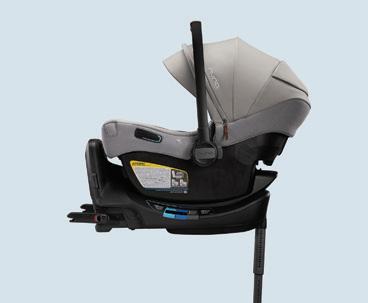


 Nicole K.
Nicole K.
FOR








ALL YOUR


adventures ahead
Out around town or exploring faraway places, we know you need high-performance baby gear that’s in it for the long haul. Our style is timeless, while the features we build into our products are expertly engineered to make travel with baby easier—giving you the convenience you need to discover the world in style.











Fan favorites that our Nuna family’s been raving about.
I have recommended this seat to all my mommy friends. I have already purchased one for my sister’s newborn.

 Amy B.
Amy B.
Having a little one is a hand full, but with my Nuna CUDL I can be hands free!! This baby carrier is perfect for a multitasking mami.

All I can say is that it feels like pushing a smooth little Rolls-Royce. It’s compact and easy to fold with one hand.


 Jerome P.
Jerome P.
It doesn’t take up a lot of space but is still roomy enough for my baby and it’s so easy to set up and pack away.
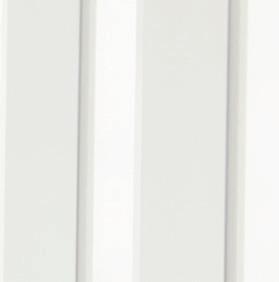
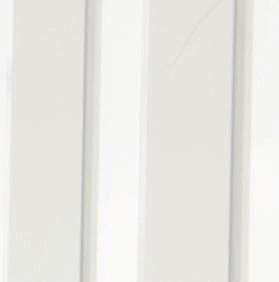 Ivy J.
Ivy J.
”
“
”
“
“ ”
”
“
@victoriamonet “ ” FR FREE M ATERIALS HIGH ST A NDARDS AWARD W INNING M I N DFUL MA N UFACTUR I N G BETTER F OR BABY Follow the journey @nuna_usa scan to shop
PRODUCT GUIDE
Check out these parent-approved favorites!
COMFORTABLE RELIEF
Support your postpartum health with expert-made relief from Doctor Butler’s. Their cooling spray soothes torn, tender, and burning perineal skin instantly, and provides a protective layer to encourage healing. Don’t love the numbness of Dermoplast?

Try this soothing spray instead. www.doctorbutlers.com
ELIMINATE STRETCH MARKS
Nourish your bump with this Dermatologist Approved, Ultra-Hydrating Cream. Proven to prevent and reduce the appearance of Stretch Marks by 62% after just 4 weeks, nêmah is clean, yet effective. Use code HMBNemah for 10% off your first order. www.nemah.com

SOOTHIC SITZ BATH
Did you know, a sitz bath can help accelerate your postpartum recovery. Warm water promotes blood flow around the anogenital area which can help you heal faster. Recommended by doctors, doulas, and midwife-nurses since the early 1800’s, hip baths are still given out in hospitals around the world till this day. Soothic, soothing postpartum, one bath at a time. Ahhh.
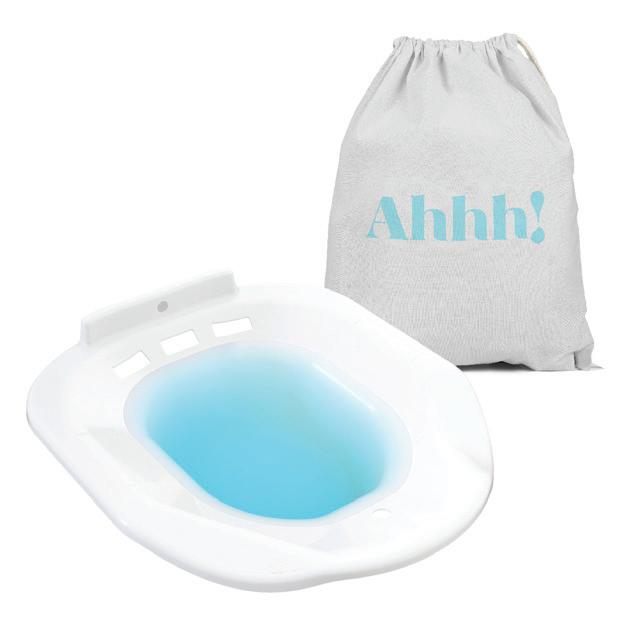
www.soothic.com
RELY ON FLORADIX
Floradix Iron + Herbs has been a leader in quality health and wellness solutions for more than 60 years and a beloved brand trusted by momsto-be for generations. Floradix supports healthy iron levels to maintain energy for a life, activated.

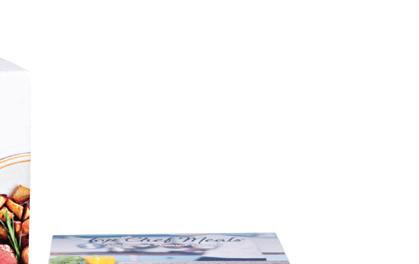
www.fl oradixusa.com
FERRETTS IRON SUPPLEMENTS

My pharmacist recommended Ferretts Iron over 7 years ago, I had been taking several different brands of iron supplements for low iron/anemia and the other brands were giving me an upset stomach and/or had not increased my iron levels on my lab work. I started taking the Ferretts and it has changed my life. No more upset stomach and my lab work remains consistent. My levels are in the healthy range, and I no longer feel that extreme fatigue. Just a fantastic product. I will never use anything else.
www.betteriron.com
FRESHNESS AT YOUR DOORSTEP
Get fully prepared meals made to order fresh and cooked using only the best ingredients by our team of chefs. We cook, pack, and deliver right to your front door. Mix & match your sides to create meals you know your family will love. With breakfast, lunch, dinner, and dessert options, you’ll always have delicious meals ready to eat. Simply heat & enjoy! Use code HMB2023 for 10% Off your first order.
www.topchefmeals.com



ADVERTISING PROMOTION
56 health4mom.org
Must-Have Toys for Budding Babes Ages 6-12 Months
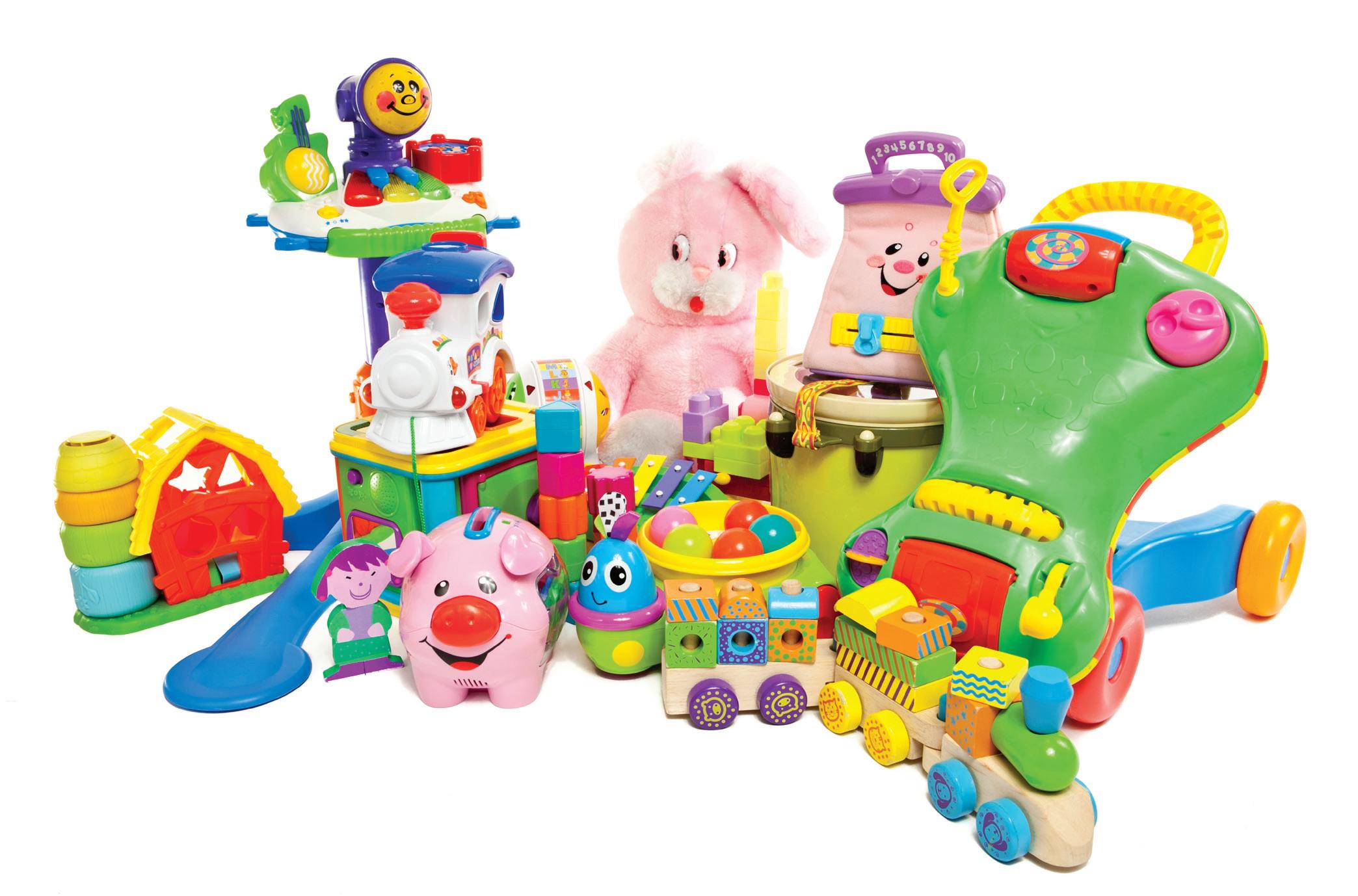 By Dr. Danielle Beasley, PhD, RN, RNC-OB, CNE
By Dr. Danielle Beasley, PhD, RN, RNC-OB, CNE
Babies are excited to learn about the world around them. Providing your baby with toys that are safe and stimulating helps them explore their senses. Toys can also add to the sensory experience— and we have top recommendations to get your little one interacting with their world.
Sensory Toys
After that initial newborn phase, toys for babies become more than just a visually fascinating distraction. Sensory-based toys provide so many advantages for our babies. Babies at this age are exploring their full five senses and they are also learning to explore and use their creativity.
Toys targeted for this age group can aid development, help babies tune into their senses, and teach them about
sound, colors, and textures. Curiosity kicks in with full force in babies from 6 to 12 months old as they start to recognize faces and items, and that’s when the real interaction begins!
Baby Walkers
Your baby is growing rapidly, and walking is an important event and skill development in a baby’s life. To help your baby find their mobility and freedom, consider having your baby use a walker.
There is no set age for a baby to use a walker. Baby’s development, strength, and size should be considered before choosing a toy that fits baby right now and in the future. Walkers are designed for babies between ages 4 to 16 months.
To use a walker, your baby needs to be able to hold their head securely and have their feet touch the floor when placed in the walker. Scan the room and area all around the walker—are there any dangerous areas such as stairs? Keep a few baby gates around to help define baby’s safe play area.
Interactive Push Walker
An interactive push walker helps babies begin to crawl and walk as they crawl and pull to stand up and reach for their toys. Ideally, start this toy from 9 months of age and up, but every baby is different.
IMAGES: DREAMSTIME
ISSUE 35 / 2023 Healthy Mom&Baby 57 healthy babies
An interactive push toy is perfect for tummy time, and then, as they seem to try to start walking, it can be pushed around the room. Remember to keep any dangerous areas, for example stairs, blocked with a baby gate whenever you introduce a wheeled toy like this.
Baby Jumper
There’s no doubt about it—most babies love jumpers! They squeal with delight as they bounce about, pushing off with their legs and letting the springs of the jumper keep them moving and upright.
There is no precise time your baby can begin to use a jumper—follow your little one’s cues. Do they try to push with their legs? Try the jumper but don’t push if baby doesn’t yet “get it.” Every child is different and develops at a different rate.
Typically, baby can start using a jumper when they can firmly hold their head up all on their own. The jumper you may choose should keep your baby’s legs in a natural, relaxed position. Jumpers that keep the legs open can put pressure on their hips, which can complicate healthy hip development. Check with the manufacturer to make sure the jumper size is right for your baby. If the jumper is suspended from a door frame, make sure it fits your door frame securely and properly.
Ride-On Toy
Near the end of baby’s first year there will come that day when you think, “wow, baby has really grown, both physically and developmentally.” Around 9 months of age most babies can sit and play with a ride-on toy, then use the walker handle to pull to a stand and walk using the ride-on as support.
For babies at this age, bright lights and fun sounds onboard the toy, while sitting or standing, can be entertaining. Ride-on toys encourage skills like coordination and balance as they discover how to move around and navigate obstacles.

Activity Table
An activity table lets babies grow into all the fun. Once they can hold their head and body solidly, they can stand at the table for short bursts during the day to explore all the fun toys.
Activity tables stimulate movement, which helps your little one develop and strengthen their muscles. Both fine and gross motor skills are enhanced when your baby interacts with the table, and its toys and features.
Relax, have fun, and enjoy the fact that there are so many buttons to press, mirrors to look into, sounds to mimic, different shapes to sort, and more! Tip: Look for an activity table that has adjustable-height legs so your baby’s favorite toy continues to grow as they do!
IMAGES: DREAMSTIME
58 health4mom.org healthy babies
DR. DANIELLE BEASLEY, PHD, RN, RNC-OB, CNE , assistant professor, is the BSN and MSN Faculty Program Director at Excelsior University School of Nursing.
Ferretts®
Iron I like because it likes me.
Why is Iron Important?
Iron is an essential mineral which plays a key role in the making of healthy red blood cells. Without healthy red blood cells, your body doesn’t get enough oxygen. When you don’t get sufficient oxygen throughout your body, you’re going to be exhausted, which can affect everything from your brain function to your immune system’s ability to fight off infections. Iron deficiency in infants* may adversely affect the long-term neuro development and behavior, some of these effects may be irreversible.

Finish Strong
A whopping 80% of a full-term baby’s iron needs are accumulated during the mother’s third trimester of pregnancy, making adequate iron intake of most importance.

If you’re concerned you or your baby may be suffering from iron deficiency, talk with your health care provider before taking any iron supplement.


Gentle and Effective — Feel the Difference






Available at your Local Pharmacy, Ask the Pharmacist
To order call 800-456-4138 or shop online at www.BetterIron.com and save 10%
with coupon code: HMB (expires 12/31/25) Also available on Amazon
*These statements have not been evaluated by the Food and Drug Administration. These products are not intended to diagnose, treat, cure or prevent any disease.
Chewable, Tablet or Liquid
Bye-bye, blowouts

We designed the back pocketed waistband to help keep messes where they belong and the comfy GentleAbsorb ® Liner to protect delicate skin.

So you can stay comfy, baby.

The comfy combo.
 ©Disney. Based on the “Winnie the Pooh” works by A.A. Milne and E.H. Shepard
©Disney. Based on the “Winnie the Pooh” works by A.A. Milne and E.H. Shepard













































































 By Shawana S. Moore, DNP, MSN, CRNP, WHNP-BC and Patricia J. Kelly, PhD, MPH, APRN
By Shawana S. Moore, DNP, MSN, CRNP, WHNP-BC and Patricia J. Kelly, PhD, MPH, APRN



















































































































 By Paris Maloof-Bury, MSN, CNM, RNC-OB, IBCLC
By Paris Maloof-Bury, MSN, CNM, RNC-OB, IBCLC









































































































































































































































































































 Chicken Fajita Bowl
Shrimp Pesto Cavatappi
Roasted Vegetable & Eggwhite Sandwich with Turkey Bacon
Braised Boneless Short Ribs
Chocolate Mousse Layer Cake
Chicken Fajita Bowl
Shrimp Pesto Cavatappi
Roasted Vegetable & Eggwhite Sandwich with Turkey Bacon
Braised Boneless Short Ribs
Chocolate Mousse Layer Cake








































 By Shawana S. Moore DNP, MSN, CRNP, WHNP-BC
By Shawana S. Moore DNP, MSN, CRNP, WHNP-BC















 By Jennifer Peterman, BSN, RN, IBCLC
By Jennifer Peterman, BSN, RN, IBCLC











































































































 Nicole K.
Nicole K.






















 Amy B.
Amy B.



 Jerome P.
Jerome P.

 Ivy J.
Ivy J.









 By Dr. Danielle Beasley, PhD, RN, RNC-OB, CNE
By Dr. Danielle Beasley, PhD, RN, RNC-OB, CNE














 ©Disney. Based on the “Winnie the Pooh” works by A.A. Milne and E.H. Shepard
©Disney. Based on the “Winnie the Pooh” works by A.A. Milne and E.H. Shepard